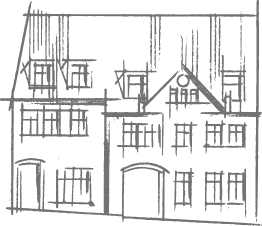
Naumburg – so charming, so historical, so picturesque. And right in the midst of it all: the new Gasthof Zufriedenheit. In less than two minutes, you can reach the Naumburg Cathedral of St. Peter and Paul, stroll amidst baroque townhouses on the historic Steinweg, follow in the footsteps of Friedrich Nietzsche, or visit Max Klinger’s vineyard in the district of Großjena.
Naumburg is also the gateway to the Saale-Unstrut wine region, a scenic and climatically appealing area in southern Saxony-Anhalt. Max Klinger called it “the Tuscany of the North” – steep vineyards line powerful limestone slopes, romantic villas dot the hills, and hardly a place is free of history; quite the contrary: this was once the land of great European rulers and kings. Embrace the culture and discover the heart of Germany.


The cathedral cemetery in Naumburg was built in the 16th century for the St. Mary's parish of the cathedral close. High dignitaries of the cathedral chapter, who previously had the right to burial in the cathedral church, were buried here as early as the end of the 16th century. Until the 20th century, canons, cathedral preachers and administrative staff of the cathedral were entitled to burial plots. Despite the opening of the new municipal cemetery in 1901, the cathedral cemetery remained important, where outstanding personalities such as cathedral deans continued to find their final resting place.
Naumburg City Park is a green oasis with historical flair. Created in the 19th century, it offers relaxation with ponds, old trees and flower beds. Playgrounds and walking paths make it a favourite place for residents and visitors alike.
Heinrich-von-Stephen-Platz
The Saale-Unstrut region near Naumburg is known for its picturesque vineyards, historic towns and cultural treasures. Here at Saale Unstrut Tourismus you can find out about all the tourist highlights in the region.
The Marientor, the last surviving town gate, and the well-preserved town wall bear witness to Naumburg's medieval heritage. A walk along these fortifications takes visitors back to centuries past.
Naumburg Cathedral is an outstanding example of Romanesque architecture and is home to the world-famous statues of the founders Uta and Ekkehard. As a UNESCO World Heritage Site, it is an impressive testimony to medieval architecture.
Marienplatz in Naumburg is a central historical square in the centre of the old town. Surrounded by charming half-timbered houses, it offers a picturesque backdrop. The square serves as a venue for events and markets and is a popular meeting place for locals and visitors alike. Nearby is the Renaissance town hall, which characterises the architecture of the plaza. Marienplatz is a lively part of Naumburg's cultural and social life.
WC
The Hohe Lilie Museum presents the history of Naumburg from early history to the present day. Works of art, historical exhibits and handicrafts provide a comprehensive insight into regional culture.
The historic market square with the Renaissance town hall is the centrepiece of Naumburg. Surrounded by charming half-timbered houses, it provides a picturesque backdrop for events and markets.
The Holzmarkt in Naumburg is a historic square in the heart of the old town. Surrounded by half-timbered houses and the Renaissance town hall, it exudes a charming flair. The Holzmarkt once served as a trading centre for timber, today it is a lively place for events, markets and cosy get-togethers. Its central location makes it a popular starting point for exploring the cultural and historical treasures of Naumburg.
The Gothic Wenzelskirche impresses with its architecture and is home to ornate wooden sculptures and a baroque pulpit. A place of silence and spiritual contemplation.
The Church of St. Peter and St. Paul in Naumburg is better known as Naumburg Cathedral or the Cathedral of St. Peter and St. Paul.
Nietzsche Dokumentationszentrum
Theater Naumburg
The waterworks, a testimony to historical engineering, once pumped water from the Saale to the higher parts of the town.
The well-preserved town wall provides an insight into medieval defence architecture.
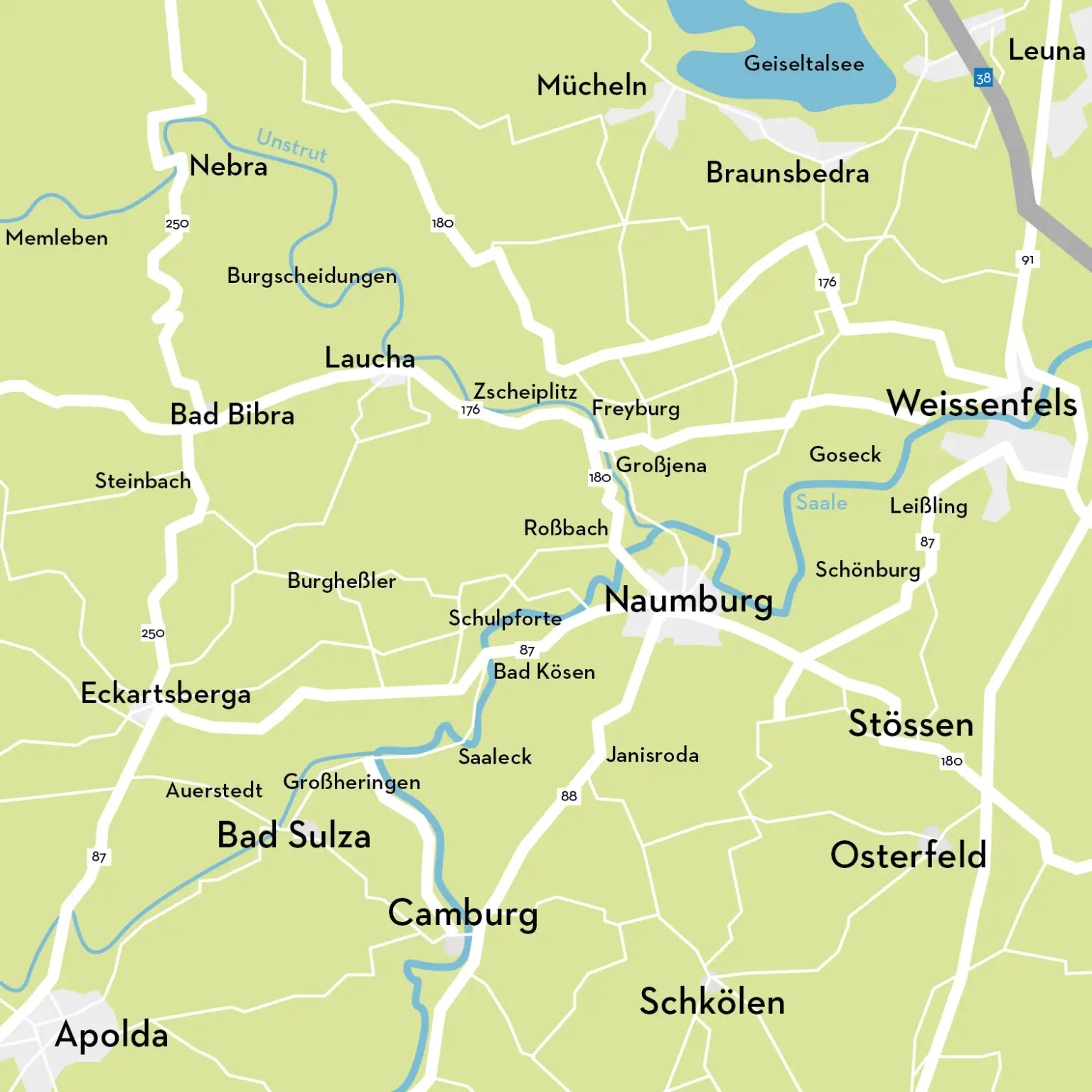
Marina Mücheln
The Mücheln marina, idyllically situated on the Geiseltalsee, is a favourite port of call for water sports enthusiasts. With modern moorings, cosy restaurants and a picturesque view of the lake, the marina offers a relaxed atmosphere for boaters and visitors alike.
Burgruine (Castle Ruin)
The Nebra castle ruins, high above the Unstrut, are a testament to medieval architecture and offer a picturesque view of the surrounding landscape. The ruins are a historical jewel and attract visitors with their history and atmosphere.
Naturpark Nebra (Nebra Nature Park)
The Nebra Nature Park boasts a diverse landscape, from idyllic riverbanks to wooded hills. With its numerous hiking trails and nature paths, the park is a paradise for nature lovers and offers the opportunity to explore the rich flora and fauna of the region.
Hedwig-Courths-Mahler-Archive in Nebra
The Hedwig-Courths-Mahler-Archive in Nebra houses an important collection of works by the German writer Hedwig Courths-Mahler (1867-1950). The archive serves as a research centre and preserves manuscripts, letters and personal items belonging to the author.
Heimatmuseum Nebra (Local History Museum Nebra)
The local history museum in Nebra presents the local history and culture of the region. Visitors can discover historical artefacts, exhibits on the town's development and insights into everyday life in times gone by. The museum offers a fascinating journey through Nebra's past and is an important cultural centre in the community.
Fundort Himmelsscheibe (Sky Disc Discovery Site)
The Nebra Sky Disc was discovered in 1999 on the Mittelberg near Nebra. This Bronze Age disc is one of the most important archaeological finds and is one of the oldest known depictions of the heavens. The site is now part of the open-air archaeological museum on the Mittelberg.
Besucherzentrum Arche Nebra (Nebra Ark Visitor Centre)
The Nebra Ark Visitor Centre is a modern museum at the site where the Nebra Sky Disc was found. It presents the fascinating history of the disc, its significance for the Bronze Age and its role in the understanding of celestial science. The centre offers interactive exhibitions, multimedia presentations and in-depth information to give visitors a comprehensive picture of this unique archaeological find.
Kloster und Kaiserpfalz Memleben (Memleben Monastery and Imperial Palace)
The Imperial Palace and Memleben Monastery are historical sites in Memleben.
The **Kaiserpfalz Memleben** was a residence of the German kings and emperors in the 10th and 11th centuries. It served as an important place for royal meetings and political decisions. Today, the ruins and archaeological remains of the palace can be visited.
The **Memleben Monastery** was founded in the 10th century and played an important role in medieval monastic life. It was also a place of education and culture. The monastery church is an impressive example of Ottonian architecture. The grounds now house a museum and offer insights into the religious and cultural heritage of this historic site.
Erlebnistierpark Memleben (Adventure Animal Park Memleben)
Memleben Adventure Park is a popular excursion destination for families and nature lovers. Here, visitors have the opportunity to experience a variety of native and exotic animals. The park favours a natural environment and offers interactive elements to promote an understanding of the animal world. In addition to the animals, there are also attractions such as petting zoos, playgrounds and informative shows that make the park an educational and entertaining place.
Burg Wendelstein (Castle Wendelstein)
Wendelstein is a district of the municipality of Kaiserpfalz in the Burgenland district in southern Saxony-Anhalt, named after the medieval castle ruins of the same name from the 14th century, which have been partially renovated and are inhabited. The castle was at times converted into the Wendelstein fortress.
Herzoglicher Weinberg Freyburg (Ducal Vineyard Freyburg)
The ducal vineyard in Freyburg is one of the oldest wine-growing areas in Germany and part of the Saale-Unstrut wine region. Traditional grape varieties are cultivated here, and the vineyard not only offers a picturesque view, but also wine tastings and guided tours.
Schloss Neuenburg (Castle Neuenburg)
Neuenburg Castle is located in Freyburg an der Unstrut in Saxony-Anhalt. It is an imposing Renaissance complex and dates back to the 16th century. The castle once served as the residence of the Dukes of Saxe-Weißenfels. Today it houses the "Neuenburg Castle Wine Museum", which presents a comprehensive collection on the history of viticulture in the Saale-Unstrut region.
Friedrich-Ludwig-Jahn-Museum
The Friedrich-Ludwig-Jahn-Museum is located in Freyburg an der Unstrut and is dedicated to the life and work of the German educationalist and father of gymnastics Friedrich Ludwig Jahn. Jahn played a key role in the German gymnastics movement and was an important representative of national renewal in the 19th century. The museum offers an insight into his life, his educational ideas and his contribution to German history.
Rotkäppchen Sektkellerei (Rotkäppchen Sparkling Wine Cellar)
Rotkäppchen Sektkellerei is a renowned sparkling wine producer based in Freyburg an der Unstrut, Saxony-Anhalt. Founded in 1856, it has a long tradition in the production of high-quality sparkling wine and is considered Germany's oldest sparkling wine cellar. The winery is known for its high-quality sparkling wines, which are produced using traditional methods. Visitors have the opportunity to experience the production processes on guided tours and take part in tastings. The Rotkäppchen sparkling wine ensemble is an important institution in the German wine and sparkling wine tradition.
Winzervereinigung Freyburg (Freyburg Winegrowers' Association)
The Freyburg Winegrowers' Association is an important co-operative of winegrowers in the Saale-Unstrut region, particularly in Freyburg an der Unstrut. Founded in 1912, it plays a central role in the region's wine production. The winegrowers' association unites various winegrowers and their vineyards to produce high-quality wines. The members work together to produce and market their products. The co-operative is an important player in the Saale-Unstrut wine region and plays a key role in shaping the local wine tradition.
Kneipp facility in Bad Bibra
The Kneipp facility in Bad Bibra follows the Kneipp teachings of the water doctor Sebastian Kneipp. This facility is part of the Kneipp spa resort of Bad Bibra and is used for water treatments such as treading water or Kneipp watering. Visitors can experience the healing effects of the water here.
Nitzsche Mill
The Nitzsche mill in the Saubach valley between Bad Bibra and Saubach is the only one of the seven former water mills that is still in working order. Since the 17th century, it has served as both a grinding mill and a sawmill, also known as the Kneiselmühle. The property combines a residential building and mill house, with a mill bed that directs water onto the water wheel. The mill, owned by the Nitzsche family for almost 100 years, once produced prized flour and also supplied cartwright's timber through the adjoining sawmill. Opposite the mill is the picturesque Mordgraben valley with its impressive rockfall.
Glockenmuseum Laucha (Bell Museum Laucha)
The bell museum in Laucha is an institution that presents a fascinating collection of bells and bell-related artefacts. The museum provides an insight into the history and craftsmanship of bell making. Visitors can admire a variety of bells of different sizes and styles, ranging from historical examples to modern variants.
Segelflugplatz Laucha (Laucha Gliding Airfield)
The gliding airfield in Laucha is a site used for gliding activities. Gliders take off from this airfield, taking advantage of the thermal conditions and wind currents to complete longer flights without motorised support. Such gliding airfields offer aviation enthusiasts the opportunity to experience the fascination of motorless flying and enjoy the beauty of the landscape from the air. The gliding aerodrome in Laucha often also offers training courses and activities for those interested in learning to glide.
Klosterkirche Zscheiplitz (Zscheiplitz Monastery Church)
The Zscheiplitz monastery church is a historic church building near Freyburg. The church dates back to the former Benedictine convent of Zscheiplitz, which was founded in the 11th century. The convent church itself is an outstanding example of Romanesque architecture and houses valuable works of art, including the famous altar of the Virgin Mary.
Mühle Zeddenbach (Zeddenbach Mill)
The Zeddenbach mill, a 120-year-old mill building, is the last remaining part of the old Zeddenbach. Due to its location on the Wine Route, the Romanesque Road and the Unstrut Cycle Route, it attracts not only technology enthusiasts but also hikers of all kinds. A visit is worthwhile, especially during guided tours, which are also offered during production.
Sonnenobservatorium Goseck (Goseck Solar Observatory)
The Goseck Solar Observatory is a reconstructed Neolithic site and is considered to be the oldest known solar calendar observatory in the world. The site consists of a circular moat and three palisade circles. The sun shines through a gate in the palisade ring during the winter solstice. The observatory was discovered in the 1990s and later reconstructed to give visitors an insight into prehistoric calendar and sky observation.
Schloss Goseck (Castle Goseck)
The baroque Goseck Castle was built in the 18th century on the remains of a medieval castle. Today, the castle houses an exhibition on the history of the region, the architecture and the history of the castle itself. The surrounding parks offer visitors the opportunity to relax and enjoy the historical atmosphere.
Schloss Neu-Augustusburg (Castle Neu-Augustusburg)
Neu-Augustusburg Castle is located in Weißenfels. It was built in the 17th century under Duke August of Saxony-Weißenfels and is an important example of Baroque architecture. Today, the castle houses the Weißenfels Castle Museum, which presents an extensive collection on the history of the region, art and cultural history, as well as Duke August and his time.
Heinrich Schütz House
The Heinrich Schütz House is a historic building in Weißenfels named after the important German composer Heinrich Schütz. The house, a Renaissance building from the 16th century, served as Heinrich Schütz's home during his school days. Today it houses a museum dedicated to the life and work of the composer.
Novalis House
The Novalis memorial in Weißenfels is dedicated to the German poet and philosopher Friedrich von Hardenberg, known by the pseudonym Novalis. Novalis spent part of his youth in Weißenfels. The memorial offers insights into his life, his works and the time in which he lived.
Allwetterrodelbahn Leißling (All-Weather Toboggan Run Leißling)
The all-weather toboggan run in Leißling offers fun for visitors of all ages all year round. The toboggan run enables fast descents on special sledges, regardless of the weather conditions. With its variety of bends and descents, the run provides entertainment and adrenaline kicks.
Margaretenkirche Steinbach (St. Margaret's Church Steinbach)
St. Margaret's Church in Steinbach, part of the local townscape since 1220/1230, was built in the Romanesque style by members of the Naumburg cathedral building school. The church is located in a village that was destroyed during the Thirty Years' War, and the present-day village of Steinbach was rebuilt on the same site. The church is described as a "village church without a village". Its interior has similarities with Naumburg Cathedral, which points to its late Romanesque origins.
Max Klinger Vineyard
Max Klinger (1857-1920), graphic artist, painter and sculptor, acquired the vineyard and vineyard house in Großjena in 1903. He created numerous etchings, drawings, watercolours and oil paintings here.
Großjena Stone Album
Großjena is home to the "Stone Album", an impressive terraced wall with twelve over-man-high reliefs, the largest of its kind in the European cultural area. It was created around 1722 by jeweller Johann Christian Steinauer as a tribute to Duke Christian II of Saxony-Weißenfels. The reliefs in a vineyard show wine motifs and are a status symbol of the wealthy citizens of Naumburg.
Schönburg Castle Ruins
The ruins of Schönburg Castle are an imposing medieval ruin perched on a steep cliff above the Saale river near Naumburg an der Saale. The castle was built in the 12th century and played an important role in the history of the region. Today, Schönburg Castle impresses not only with its historical remains, but also with its panoramic views of the surrounding countryside.
Gothic House
The Gothic House Burgheßler, a listed building in the Kirchweg of Burgheßler, was built between 1493 and 1494 and probably served as the noble residence of the von Heßler and Burkersroda family. In 1770, the noble family moved to a new castle and the building was used from then on as a granary (warehouse and storage building).
Cistercian Monastery and Pforta Country School
The Cistercian monastery and the Pforta country school have a rich history:
The Cistercian monastery was founded in the 12th century and was an important Cistercian monastery in the region. The monks devoted themselves to prayer, meditation and agricultural work. Over the centuries, the monastery played an important role in cultural and religious development.
The Landesschule Pforta, also known as the Fürstenschule Pforta, was founded in the 16th century on the site of the former monastery. The school is a renowned educational institution and has an impressive list of alumni, including famous personalities such as Nietzsche and Wagner. The school is known for its rigorous education and historical significance.
Together, the Cistercian monastery and the Landesschule Pforta represent a fascinating combination of religious history and significant educational tradition in the region.
Pforta Monastery State Winery
The Pforta Monastery State Winery is an important institution in Saxony-Anhalt. It is located on the grounds of the former Cistercian monastery of Pforta, which was founded in the 12th century. The estate is known for its wine production, which is based on the region's fertile vineyards.
Wine production at Pforta Monastery has a long tradition and is cultivated by experts. The vines are grown on the terraces surrounding the monastery, and winemaking combines modern techniques with traditional methods. The winery produces a variety of wines, including red wines, white wines and sparkling wines.
The historic setting of Pforta Monastery and the quality of the wines make the Landesweingut a favourite destination for wine lovers and tourists. Visitors often have the opportunity to experience wine tastings and enjoy the picturesque surroundings of the vineyards.
Romanesque House
As a listed building on the Romanesque Road, the Romanesque House is one of the oldest preserved stone buildings of a monastic outhouse in central Germany. It houses an exhibition about the world-famous doll designer Käthe Kruse with more than 250 dolls.
Eckartsburg Castle
Eckartsburg Castle is a historic castle in Saxony-Anhalt. Its history dates back to the 12th century and it has had various functions and uses over the centuries. The castle is situated on a mountain spur and offers an impressive view of the surrounding countryside. Today, Eckartsburg Castle is a popular excursion destination that attracts visitors with its historical charm and picturesque surroundings.
Dutch Mill
The Dutch Mill in Eckartsberga is a historic mill building in Saxony-Anhalt. The name "Holländer Mühle" (Dutch mill) refers to the characteristic construction method, which originally came from the Netherlands. This mill was built in the 19th century and was used to process grain. Today, the Holländer Mühle in Eckartsberga is a historical monument and a popular excursion destination.
Eckartsberga Adventure Park
Amusement park with various attractions and activities for visitors, especially families. The park offers rides, playgrounds and other leisure activities.
Großheringen Estate
Welcome to the home of the Thuringian Wine Princess 2022/2023, Katharina Sauer. The four-sided farm in Großheringen is serenely situated at the confluence of the Ilm and Saale rivers.
Rudelsburg
The most beautiful of all Saale castles rises picturesquely on steep limestone cliffs above the course of the Saale.
Saaleck Castle
Saaleck Castle, situated high above the Saale on the Romanesque Road, is a picturesque medieval fortress with a rich history. Visitors can explore the impressive architecture and enjoy a fascinating view of the Saale valley from the castle walls.
Auerstedt Castle
Auerstedt Castle in Thuringia is famous for the Battle of Auerstedt during the Napoleonic Wars in 1806. The baroque castle from the 18th century now houses a memorial that commemorates this historic battle and attracts visitors interested in history.
Goethe Garden House II
A much-noticed replica of the Goethe Garden House, created as part of the Weimar Culture City Year 99, was reopened on 27 August 2002 below the Toskana Therme. The 1:1 replica is open to the public, functions as an exhibition space and can also be used for weddings.
Toscana Thermae
The Toskana Therme is a wellness and relaxation centre in Bad Sulza. The spa is known for its unique architecture and innovative spa concepts. A particular highlight is the Liquid Sound® pool, where guests can relax to underwater music and light effects.
The spa utilises the region's mineral-rich thermal springs to offer a range of wellness services. These include various saunas, massages and treatments for relaxation and regeneration.
Salt Works, Graduation Tower
The historic salt works are a unique technical monument in Europe.
Camburg Castle
The castle complex in Camburg is a historic building in Thuringia. It represents an important part of the region's history and architecture. As a fortification, it played a role in various eras, and today the castle attracts visitors with its historical charm and picturesque surroundings.
Schkölen Moated Castle
The moated castle of Schkölen in Thuringia was built in the 11th century. The medieval castle with moats once served as a defence and residential building. Today it is used for cultural events, concerts and weddings.
Bells and Town Museum Apolda
The bell and town museum in Apolda in Thuringia presents a collection of bells and offers insights into the town's history. The exhibition displays historical bells and provides information about their significance. The town museum also sheds light on aspects of local history and culture.
Kunsthaus Avantgarde Apolda
The Kunsthaus Avantgarde in Apolda is an institution that presents and promotes modern art. Visitors can experience contemporary exhibitions, events and cultural projects here. The Kunsthaus Avantgarde plays an important role in promoting contemporary art in the region and offers a platform for artists to present their work.

• Marina Mücheln
• Burgruine
• Naturpark Nebra
• Hedwig-Courths-Mahler-Archiv
• Heimatmuseum Nebra
• Fundort Himmelsscheibe
• Besucherzentrum Arche Nebra
• Kloster und Kaiserpfalz
• Memleben
• Erlebnistierpark Memleben
• Burg Wendelstein
• Herzoglicher Weinberg Freyburg
• Schloss Neuenburg
• Friedrich-Ludwig-Jahn-Museum
• Rotkäppchen Sektkellerei
• Winzervereinigung Freyburg
• Kneippsche Anlage Bad Bibra
• Nitzsche-Mühle
• Glockenmuseum Laucha
• Segelflugplatz Laucha
• Klosterkirche Zscheiplitz
• Mühle Zeddenbach
• Sonnenobservatorium Goseck
• Schloss Goseck
• Schloss Neu-Augustusburg
• Heinrich-Schütz-Haus
• Novalishaus
• Allwetterrodelbahn Leißling
• Margaretenkirche Steinbach
• Max-Klinger-Weinberg
• Steinernes Album Großjena
• Burgruine Schönburg
• Gotisches Haus
• Zisterzienserkloster
• Landesschule Pforta
• Landesweingut Kloster Pforta
• Romanisches Haus
• Eckartsburg
• Holländer Mühle
• Erlebnispark Eckartsberga
• Gutshof Großheringen
• Rudelsburg
• Burg Saaleck
• Schloss Auerstedt
• Goethe Gartenhaus II
• Toscana Therme
• Salinentechnische Anlagen
• Burgenanlage Camburg
• Wasserburg Schkölen
• Glocken und Stadtmuseum Apolda
• Kunsthaus Avantgarde Apolda
Bells and Town Museum Apolda
The bell and town museum in Apolda in Thuringia presents a collection of bells and offers insights into the town’s history. The exhibition displays historical bells and provides information about their significance. The town museum also sheds light on aspects of local history and culture.
Kunsthaus Avantgarde Apolda
The Kunsthaus Avantgarde in Apolda is an institution that presents and promotes modern art. Visitors can experience contemporary exhibitions, events and cultural projects here. The Kunsthaus Avantgarde plays an important role in promoting contemporary art in the region and offers a platform for artists to present their work.
Auerstedt Castle
Auerstedt Castle in Thuringia is famous for the Battle of Auerstedt during the Napoleonic Wars in 1806. The baroque castle from the 18th century now houses a memorial that commemorates this historic battle and attracts visitors interested in history.
Kneipp facility in Bad Bibra
The Kneipp facility in Bad Bibra follows the Kneipp teachings of the water doctor Sebastian Kneipp. This facility is part of the Kneipp spa resort of Bad Bibra and is used for water treatments such as treading water or Kneipp watering. Visitors can experience the healing effects of the water here.
Nitzsche Mill
The Nitzsche mill in the Saubach valley between Bad Bibra and Saubach is the only one of the seven former water mills that is still in working order. Since the 17th century, it has served as both a grinding mill and a sawmill, also known as the Kneiselmühle. The property combines a residential building and mill house, with a mill bed that directs water onto the water wheel. The mill, owned by the Nitzsche family for almost 100 years, once produced prized flour and also supplied cartwright’s timber through the adjoining sawmill. Opposite the mill is the picturesque Mordgraben valley with its impressive rockfall.
Romanesque House
As a listed building on the Romanesque Road, the Romanesque House is one of the oldest preserved stone buildings of a monastic outhouse in central Germany. It houses an exhibition about the world-famous doll designer Käthe Kruse with more than 250 dolls.
Goethe Garden House II
A much-noticed replica of the Goethe Garden House, created as part of the Weimar Culture City Year 99, was reopened on 27 August 2002 below the Toskana Therme. The 1:1 replica is open to the public, functions as an exhibition space and can also be used for weddings.
Toscana Thermae
The Toskana Therme is a wellness and relaxation centre in Bad Sulza. The spa is known for its unique architecture and innovative spa concepts. A particular highlight is the Liquid Sound® pool, where guests can relax to underwater music and light effects.
The spa utilises the region’s mineral-rich thermal springs to offer a range of wellness services. These include various saunas, massages and treatments for relaxation and regeneration.
Salt Works, Graduation Tower
The historic salt works are a unique technical monument in Europe.
Gothic House
The Gothic House Burgheßler, a listed building in the Kirchweg of Burgheßler, was built between 1493 and 1494 and probably served as the noble residence of the von Heßler and Burkersroda family. In 1770, the noble family moved to a new castle and the building was used from then on as a granary (warehouse and storage building).
Camburg Castle
The castle complex in Camburg is a historic building in Thuringia. It represents an important part of the region’s history and architecture. As a fortification, it played a role in various eras, and today the castle attracts visitors with its historical charm and picturesque surroundings.
Eckartsburg Castle
Eckartsburg Castle is a historic castle in Saxony-Anhalt. Its history dates back to the 12th century and it has had various functions and uses over the centuries. The castle is situated on a mountain spur and offers an impressive view of the surrounding countryside. Today, Eckartsburg Castle is a popular excursion destination that attracts visitors with its historical charm and picturesque surroundings.
Dutch Mill
The Dutch Mill in Eckartsberga is a historic mill building in Saxony-Anhalt. The name “Holländer Mühle” (Dutch mill) refers to the characteristic construction method, which originally came from the Netherlands. This mill was built in the 19th century and was used to process grain. Today, the Holländer Mühle in Eckartsberga is a historical monument and a popular excursion destination.
Eckartsberga Adventure Park
Amusement park with various attractions and activities for visitors, especially families. The park offers rides, playgrounds and other leisure activities.
Herzoglicher Weinberg Freyburg (Ducal Vineyard Freyburg)
The ducal vineyard in Freyburg is one of the oldest wine-growing areas in Germany and part of the Saale-Unstrut wine region. Traditional grape varieties are cultivated here, and the vineyard not only offers a picturesque view, but also wine tastings and guided tours.
Schloss Neuenburg (Castle Neuenburg)
Neuenburg Castle is located in Freyburg an der Unstrut in Saxony-Anhalt. It is an imposing Renaissance complex and dates back to the 16th century. The castle once served as the residence of the Dukes of Saxe-Weißenfels. Today it houses the “Neuenburg Castle Wine Museum”, which presents a comprehensive collection on the history of viticulture in the Saale-Unstrut region.
Friedrich-Ludwig-Jahn-Museum
The Friedrich-Ludwig-Jahn-Museum is located in Freyburg an der Unstrut and is dedicated to the life and work of the German educationalist and father of gymnastics Friedrich Ludwig Jahn. Jahn played a key role in the German gymnastics movement and was an important representative of national renewal in the 19th century. The museum offers an insight into his life, his educational ideas and his contribution to German history.
Rotkäppchen Sektkellerei (Rotkäppchen Sparkling Wine Cellar)
Rotkäppchen Sektkellerei is a renowned sparkling wine producer based in Freyburg an der Unstrut, Saxony-Anhalt. Founded in 1856, it has a long tradition in the production of high-quality sparkling wine and is considered Germany’s oldest sparkling wine cellar. The winery is known for its high-quality sparkling wines, which are produced using traditional methods. Visitors have the opportunity to experience the production processes on guided tours and take part in tastings. The Rotkäppchen sparkling wine ensemble is an important institution in the German wine and sparkling wine tradition.
Winzervereinigung Freyburg (Freyburg Winegrowers’ Association)
The Freyburg Winegrowers’ Association is an important co-operative of winegrowers in the Saale-Unstrut region, particularly in Freyburg an der Unstrut. Founded in 1912, it plays a central role in the region’s wine production. The winegrowers’ association unites various winegrowers and their vineyards to produce high-quality wines. The members work together to produce and market their products. The co-operative is an important player in the Saale-Unstrut wine region and plays a key role in shaping the local wine tradition.
Sonnenobservatorium Goseck (Goseck Solar Observatory)
The Goseck Solar Observatory is a reconstructed Neolithic site and is considered to be the oldest known solar calendar observatory in the world. The site consists of a circular moat and three palisade circles. The sun shines through a gate in the palisade ring during the winter solstice. The observatory was discovered in the 1990s and later reconstructed to give visitors an insight into prehistoric calendar and sky observation.
Schloss Goseck (Castle Goseck)
The baroque Goseck Castle was built in the 18th century on the remains of a medieval castle. Today, the castle houses an exhibition on the history of the region, the architecture and the history of the castle itself. The surrounding parks offer visitors the opportunity to relax and enjoy the historical atmosphere.
Großheringen Estate
Welcome to the home of the Thuringian Wine Princess 2022/2023, Katharina Sauer. The four-sided farm in Großheringen is serenely situated at the confluence of the Ilm and Saale rivers.
Max Klinger Vineyard
Max Klinger (1857-1920), graphic artist, painter and sculptor, acquired the vineyard and vineyard house in Großjena in 1903. He created numerous etchings, drawings, watercolours and oil paintings here.
Großjena Stone Album
Großjena is home to the “Stone Album”, an impressive terraced wall with twelve over-man-high reliefs, the largest of its kind in the European cultural area. It was created around 1722 by jeweller Johann Christian Steinauer as a tribute to Duke Christian II of Saxony-Weißenfels. The reliefs in a vineyard show wine motifs and are a status symbol of the wealthy citizens of Naumburg.
Glockenmuseum Laucha (Bell Museum Laucha)
The bell museum in Laucha is an institution that presents a fascinating collection of bells and bell-related artefacts. The museum provides an insight into the history and craftsmanship of bell making. Visitors can admire a variety of bells of different sizes and styles, ranging from historical examples to modern variants.
Segelflugplatz Laucha (Laucha Gliding Airfield)
The gliding airfield in Laucha is a site used for gliding activities. Gliders take off from this airfield, taking advantage of the thermal conditions and wind currents to complete longer flights without motorised support. Such gliding airfields offer aviation enthusiasts the opportunity to experience the fascination of motorless flying and enjoy the beauty of the landscape from the air. The gliding aerodrome in Laucha often also offers training courses and activities for those interested in learning to glide.
Allwetterrodelbahn Leißling (All-Weather Toboggan Run Leißling)
The all-weather toboggan run in Leißling offers fun for visitors of all ages all year round. The toboggan run enables fast descents on special sledges, regardless of the weather conditions. With its variety of bends and descents, the run provides entertainment and adrenaline kicks.
Kloster und Kaiserpfalz Memleben (Memleben Monastery and Imperial Palace)
The Imperial Palace and Memleben Monastery are historical sites in Memleben.
The **Kaiserpfalz Memleben** was a residence of the German kings and emperors in the 10th and 11th centuries. It served as an important place for royal meetings and political decisions. Today, the ruins and archaeological remains of the palace can be visited.
The **Memleben Monastery** was founded in the 10th century and played an important role in medieval monastic life. It was also a place of education and culture. The monastery church is an impressive example of Ottonian architecture. The grounds now house a museum and offer insights into the religious and cultural heritage of this historic site.
Erlebnistierpark Memleben (Adventure Animal Park Memleben)
Memleben Adventure Park is a popular excursion destination for families and nature lovers. Here, visitors have the opportunity to experience a variety of native and exotic animals. The park favours a natural environment and offers interactive elements to promote an understanding of the animal world. In addition to the animals, there are also attractions such as petting zoos, playgrounds and informative shows that make the park an educational and entertaining place.
Burg Wendelstein (Castle Wendelstein)
Wendelstein is a district of the municipality of Kaiserpfalz in the Burgenland district in southern Saxony-Anhalt, named after the medieval castle ruins of the same name from the 14th century, which have been partially renovated and are inhabited. The castle was at times converted into the Wendelstein fortress.
Marina Mücheln
The Mücheln marina, idyllically situated on the Geiseltalsee, is a favourite port of call for water sports enthusiasts. With modern moorings, cosy restaurants and a picturesque view of the lake, the marina offers a relaxed atmosphere for boaters and visitors alike.
Burgruine (Castle Ruin)
The Nebra castle ruins, high above the Unstrut, are a testament to medieval architecture and offer a picturesque view of the surrounding landscape. The ruins are a historical jewel and attract visitors with their history and atmosphere.
Rudelsburg
The most beautiful of all Saale castles rises picturesquely on steep limestone cliffs above the course of the Saale.
Saaleck Castle
Saaleck Castle, situated high above the Saale on the Romanesque Road, is a picturesque medieval fortress with a rich history. Visitors can explore the impressive architecture and enjoy a fascinating view of the Saale valley from the castle walls.
Schkölen Moated Castle
The moated castle of Schkölen in Thuringia was built in the 11th century. The medieval castle with moats once served as a defence and residential building. Today it is used for cultural events, concerts and weddings.
Schönburg Castle Ruins
The ruins of Schönburg Castle are an imposing medieval ruin perched on a steep cliff above the Saale river near Naumburg an der Saale. The castle was built in the 12th century and played an important role in the history of the region. Today, Schönburg Castle impresses not only with its historical remains, but also with its panoramic views of the surrounding countryside.
Cistercian Monastery and Pforta Country School
The Cistercian monastery and the Pforta country school have a rich history:
The Cistercian monastery was founded in the 12th century and was an important Cistercian monastery in the region. The monks devoted themselves to prayer, meditation and agricultural work. Over the centuries, the monastery played an important role in cultural and religious development.
The Landesschule Pforta, also known as the Fürstenschule Pforta, was founded in the 16th century on the site of the former monastery. The school is a renowned educational institution and has an impressive list of alumni, including famous personalities such as Nietzsche and Wagner. The school is known for its rigorous education and historical significance.
Together, the Cistercian monastery and the Landesschule Pforta represent a fascinating combination of religious history and significant educational tradition in the region.
Pforta Monastery State Winery
The Pforta Monastery State Winery is an important institution in Saxony-Anhalt. It is located on the grounds of the former Cistercian monastery of Pforta, which was founded in the 12th century. The estate is known for its wine production, which is based on the region’s fertile vineyards.
Wine production at Pforta Monastery has a long tradition and is cultivated by experts. The vines are grown on the terraces surrounding the monastery, and winemaking combines modern techniques with traditional methods. The winery produces a variety of wines, including red wines, white wines and sparkling wines.
The historic setting of Pforta Monastery and the quality of the wines make the Landesweingut a favourite destination for wine lovers and tourists. Visitors often have the opportunity to experience wine tastings and enjoy the picturesque surroundings of the vineyards.
Margaretenkirche Steinbach (St. Margaret’s Church Steinbach)
St. Margaret’s Church in Steinbach, part of the local townscape since 1220/1230, was built in the Romanesque style by members of the Naumburg cathedral building school. The church is located in a village that was destroyed during the Thirty Years’ War, and the present-day village of Steinbach was rebuilt on the same site. The church is described as a “village church without a village”. Its interior has similarities with Naumburg Cathedral, which points to its late Romanesque origins.
Schloss Neu-Augustusburg (Castle Neu-Augustusburg)
Neu-Augustusburg Castle is located in Weißenfels. It was built in the 17th century under Duke August of Saxony-Weißenfels and is an important example of Baroque architecture. Today, the castle houses the Weißenfels Castle Museum, which presents an extensive collection on the history of the region, art and cultural history, as well as Duke August and his time.
Heinrich Schütz House
The Heinrich Schütz House is a historic building in Weißenfels named after the important German composer Heinrich Schütz. The house, a Renaissance building from the 16th century, served as Heinrich Schütz’s home during his school days. Today it houses a museum dedicated to the life and work of the composer.
Novalis House
The Novalis memorial in Weißenfels is dedicated to the German poet and philosopher Friedrich von Hardenberg, known by the pseudonym Novalis. Novalis spent part of his youth in Weißenfels. The memorial offers insights into his life, his works and the time in which he lived.
Klosterkirche Zscheiplitz (Zscheiplitz Monastery Church)
The Zscheiplitz monastery church is a historic church building near Freyburg. The church dates back to the former Benedictine convent of Zscheiplitz, which was founded in the 11th century. The convent church itself is an outstanding example of Romanesque architecture and houses valuable works of art, including the famous altar of the Virgin Mary.
Mühle Zeddenbach (Zeddenbach Mill)
The Zeddenbach mill, a 120-year-old mill building, is the last remaining part of the old Zeddenbach. Due to its location on the Wine Route, the Romanesque Road and the Unstrut Cycle Route, it attracts not only technology enthusiasts but also hikers of all kinds. A visit is worthwhile, especially during guided tours, which are also offered during production.
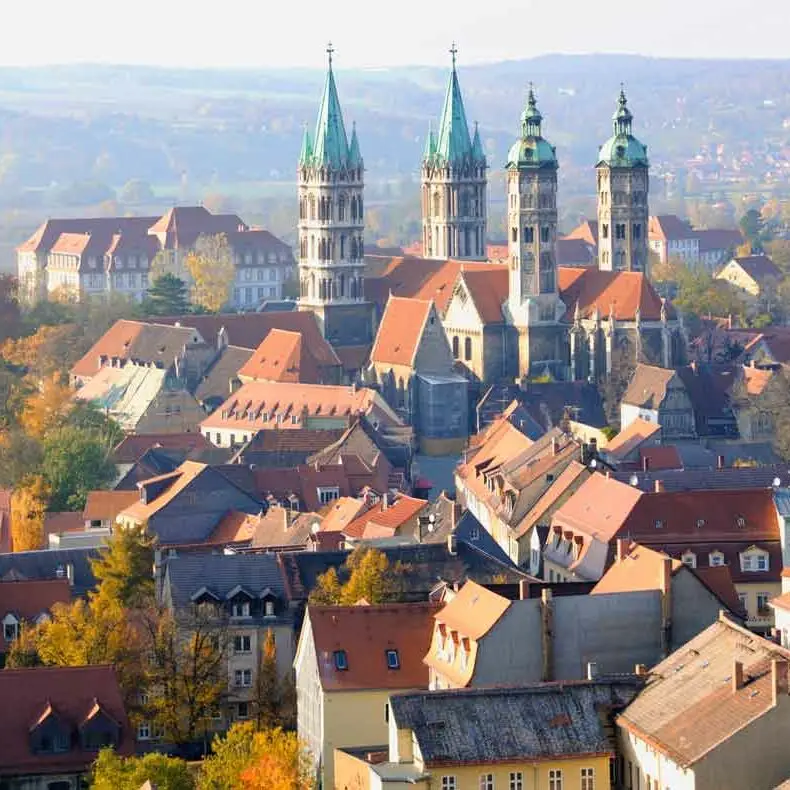
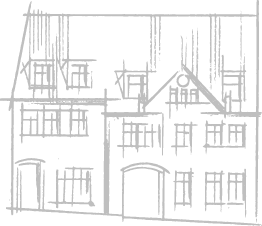
The now Protestant Naumburg Cathedral of St. Peter and St. Paul, built in the 13th century, is an important architectural monument and home to the Margravine Uta von Ballenstedt, one of the most famous and beautiful women of the Middle Ages – her statue is considered the pinnacle of German Gothic art. The cathedral is also home to eleven other almost life-size and detailed statues of donors. Two further highlights: The windows in the Elisabeth Chapel designed by Leipzig artist Neo Rauch (*1960) and the Marian altar by Lucas Cranach the Elder added by Michael Triegel. Naumburg Cathedral has been a UNESCO World Heritage Site since 2018.
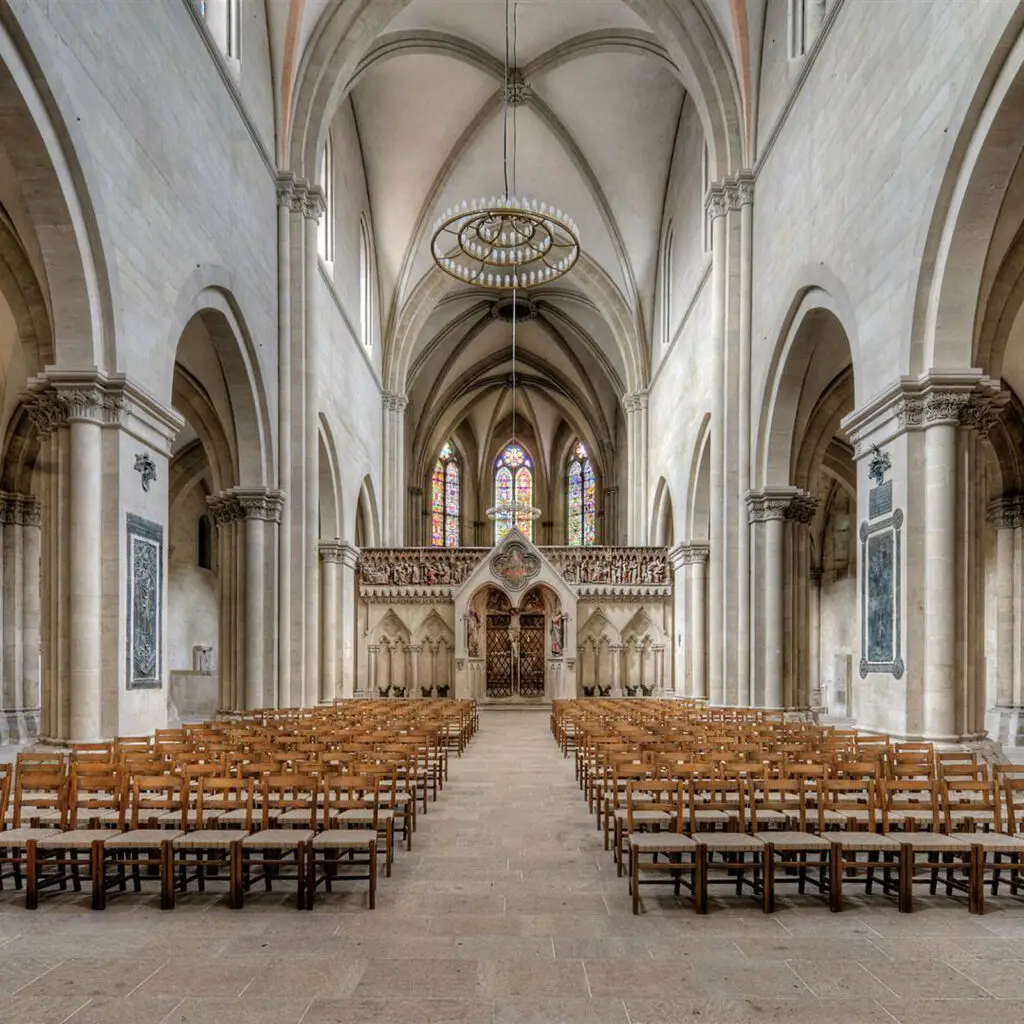
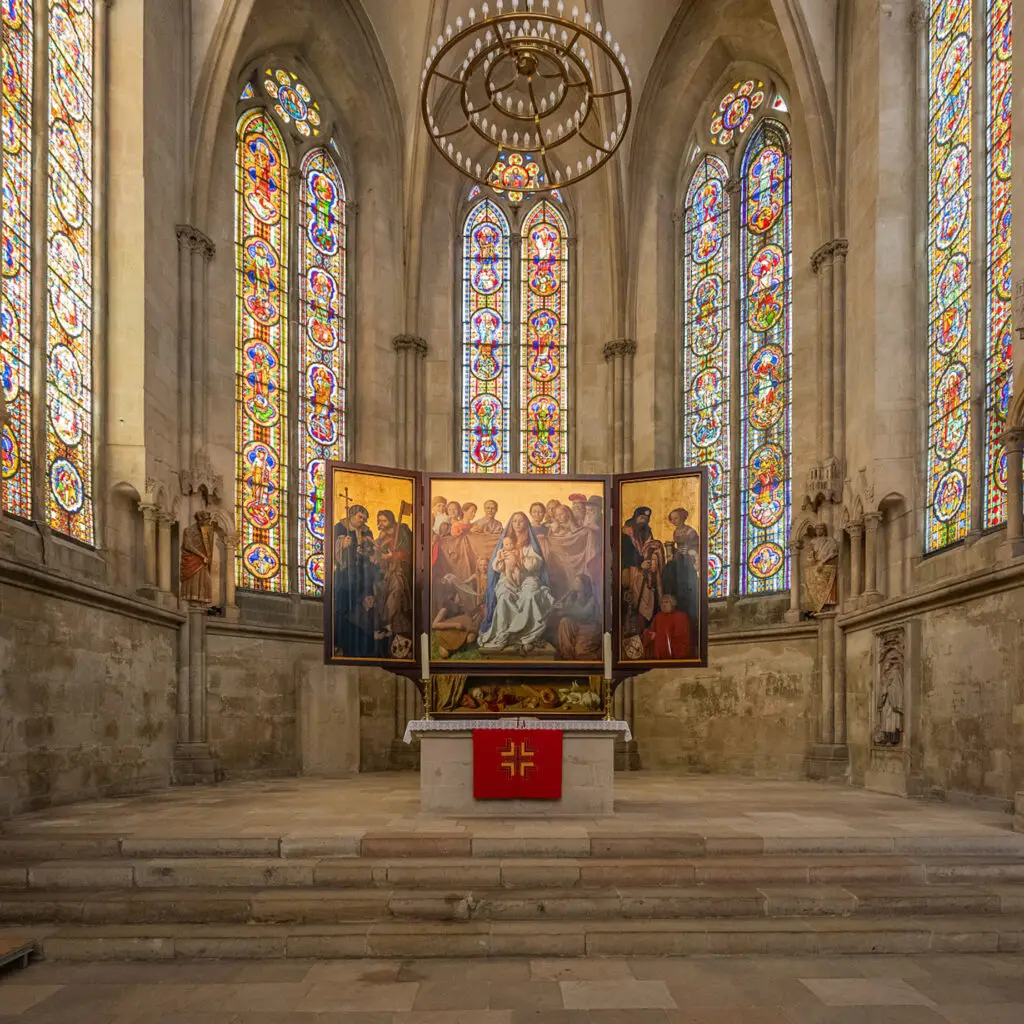
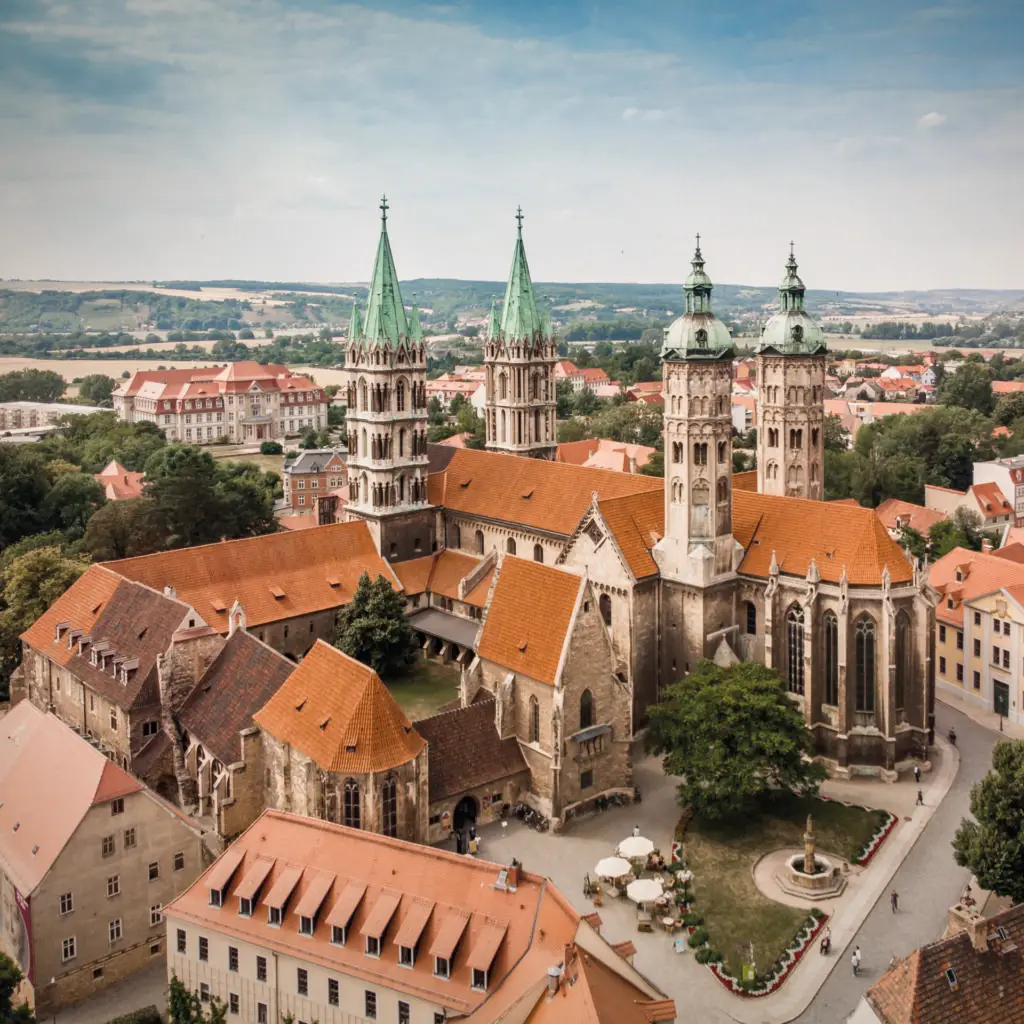
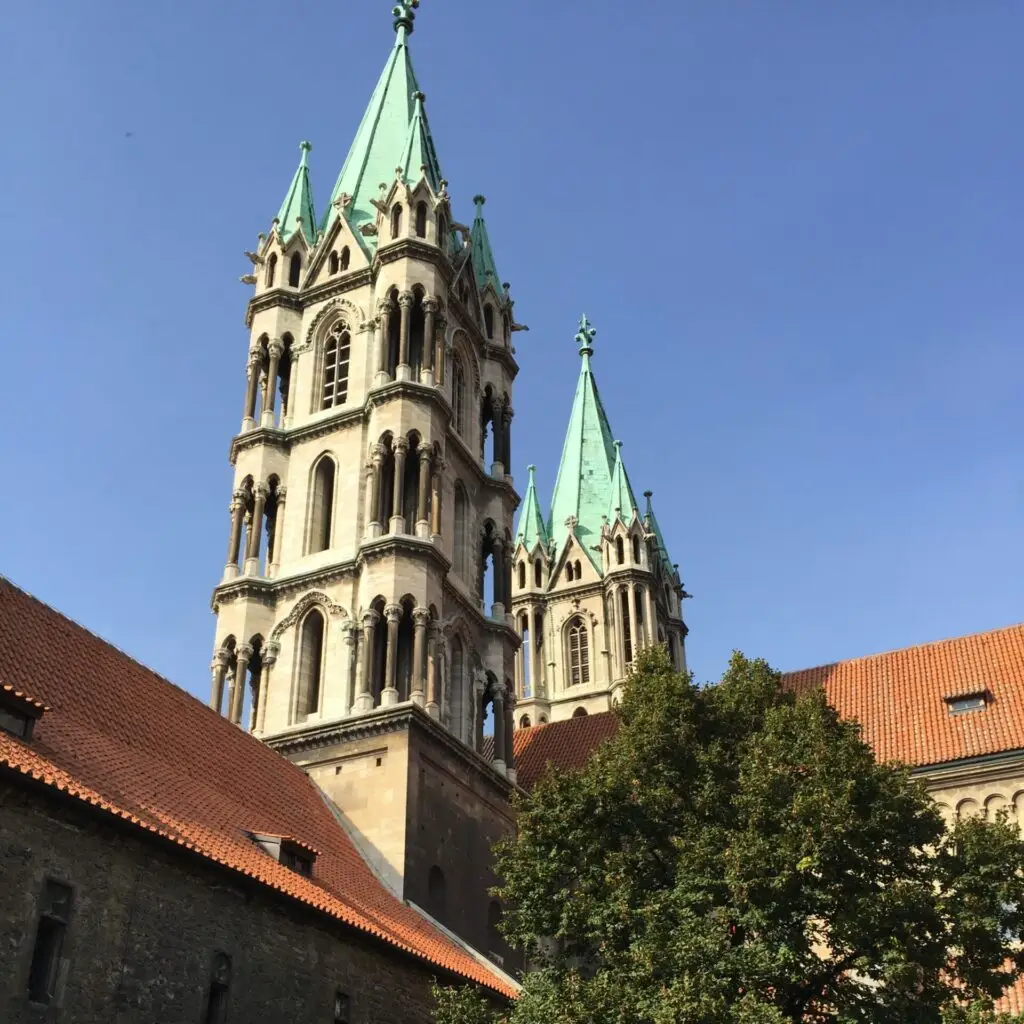

The town church of St. Wenceslas, located to the south of the market square, is the distinctive landmark of the town centre. Originally built in 1426, the interior was remodelled in Baroque style in 1724. The church impresses with its valuable interior, including the baroque high altar from 1680 and two paintings by Lucas Cranach the Elder.
The tombstone of August Leubelfing, a page of the Swedish King Gustav Adolf, who fell in the Battle of Lützen in 1632, is particularly noteworthy. The town church is also home to the only authentically preserved Bach organ, which was tested by Bach and Silbermann in 1746. This cultural heritage attracts organ lovers and history buffs alike.
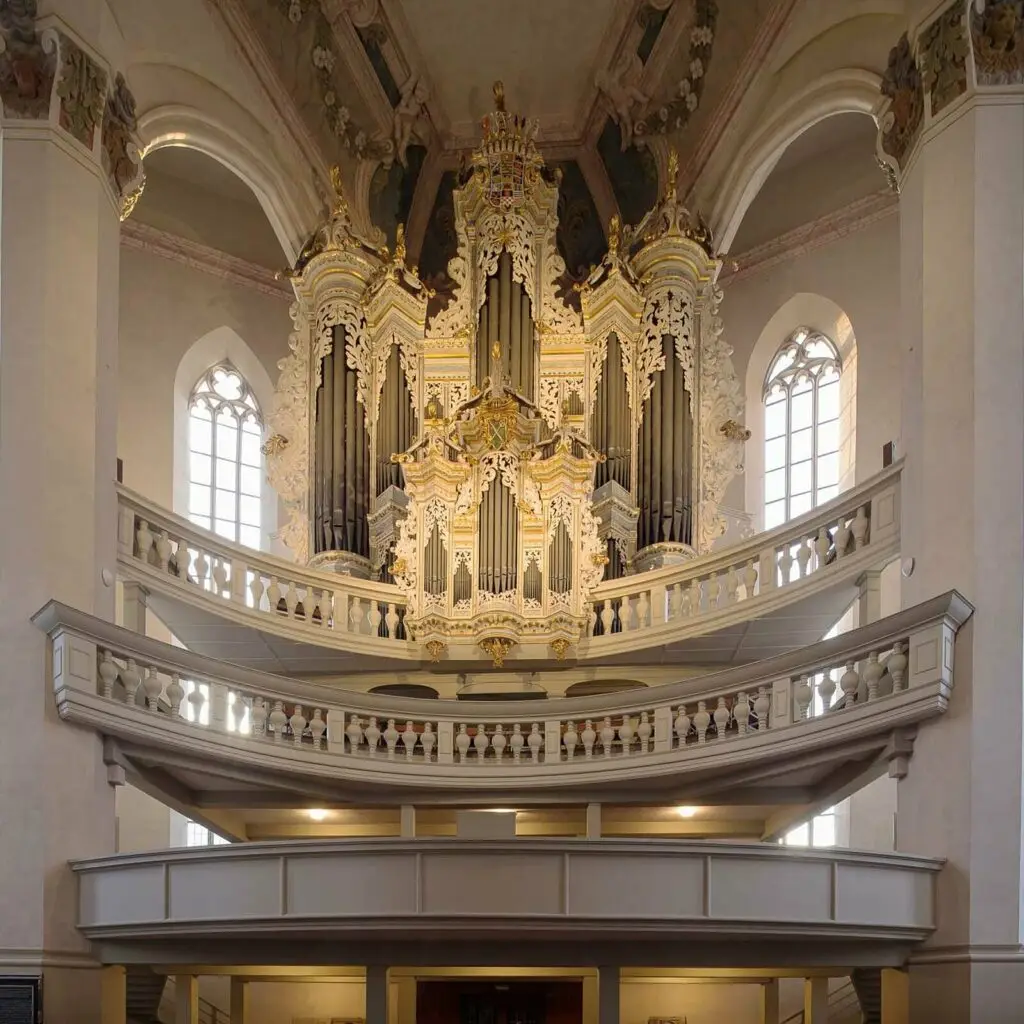
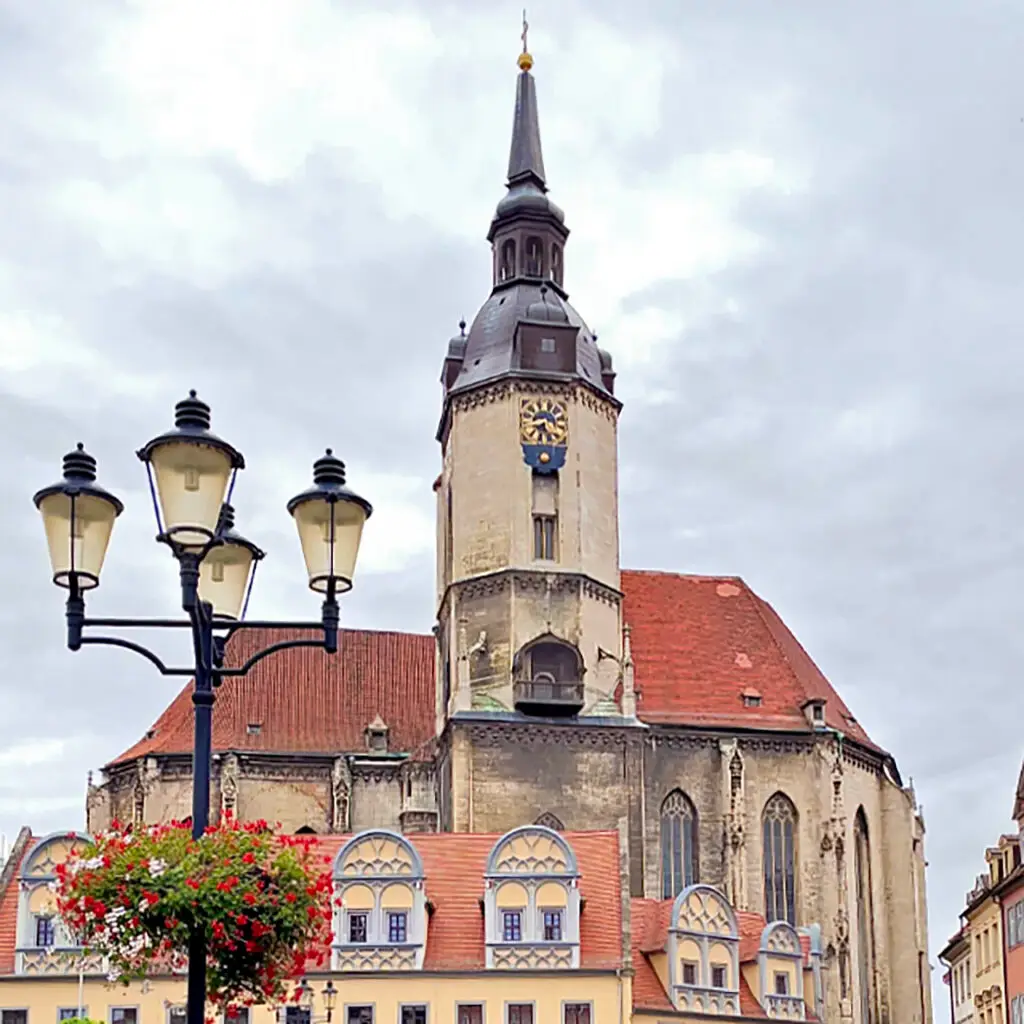
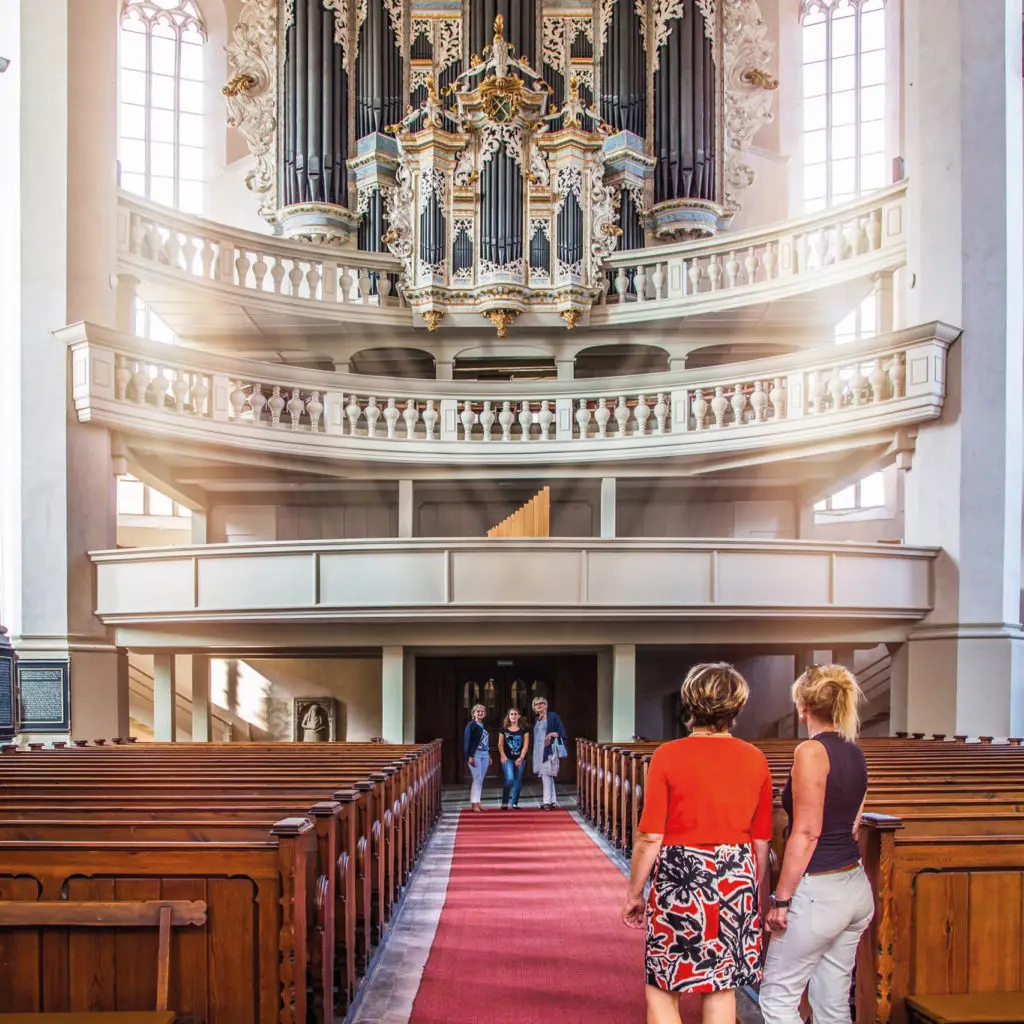

50 private wineries, the Freyburg Winegrowers’ Association, the Kloster Pforta State Winery and the Rotkäppchen sparkling wine cellar are the makers of fine wines of unrivalled quality. The Ottonians, who first planted vines here over 1,000 years ago, discovered that Saxony-Anhalt offers first-class conditions for winegrowing. Today, Germany’s northernmost quality wine-growing region enjoys an excellent reputation, and the rare red wines are particularly sought-after.
The region’s red sandstone and shell limestone soils are exceptionally mineralised, making them the ideal breeding ground for great wines. The climate in southern Saxony-Anhalt is surprisingly mild, with little rainfall and a particularly pleasant 1,600 hours of sunshine a year. The painter Max Klinger coined the expression “Tuscany of the North” due to these circumstances.
Do you know vineyard cottages? They are almost unique here and come in all sizes, right up to villas. The countless steep terraces, made necessary by the narrow valleys of the Saale and Unstrut rivers, also offer unique views of this cultural landscape. Countless wine taverns cater for their guests with wines from the producer and delicious snacks.
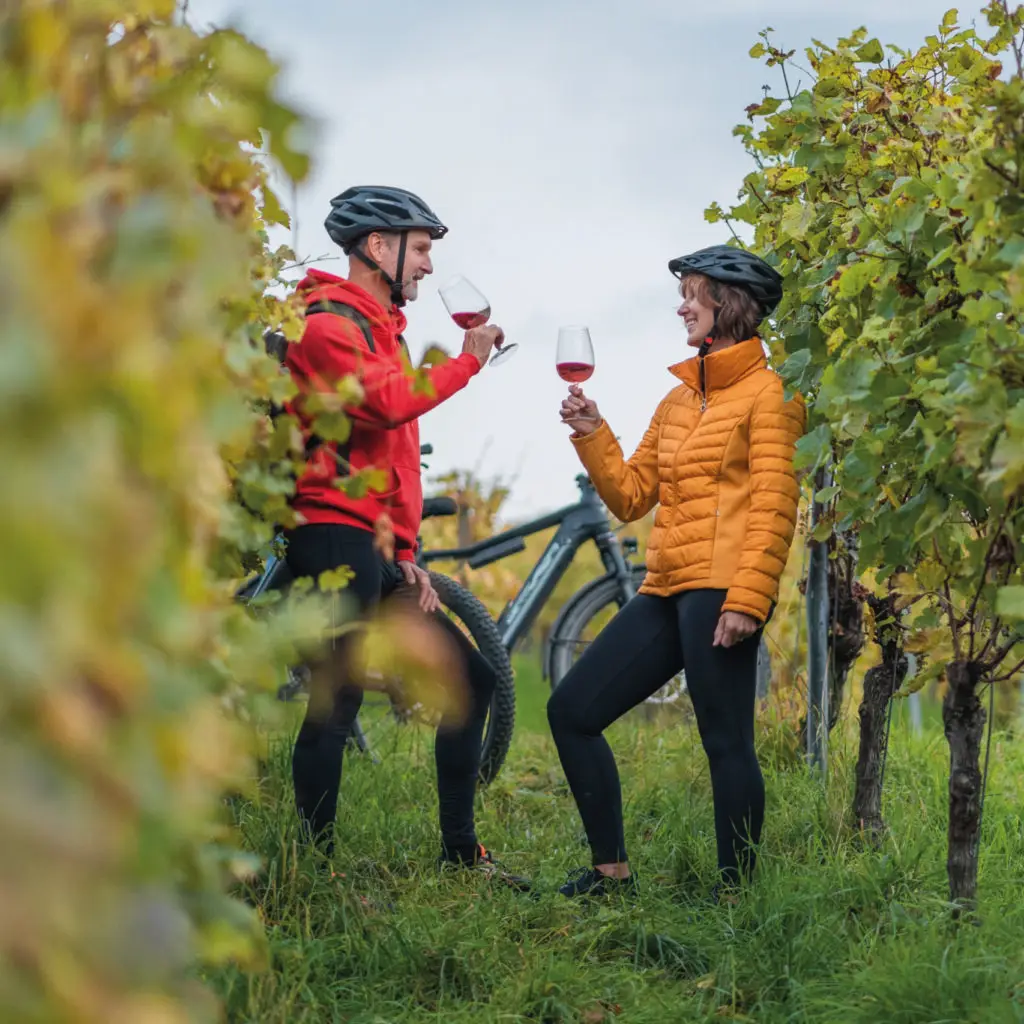
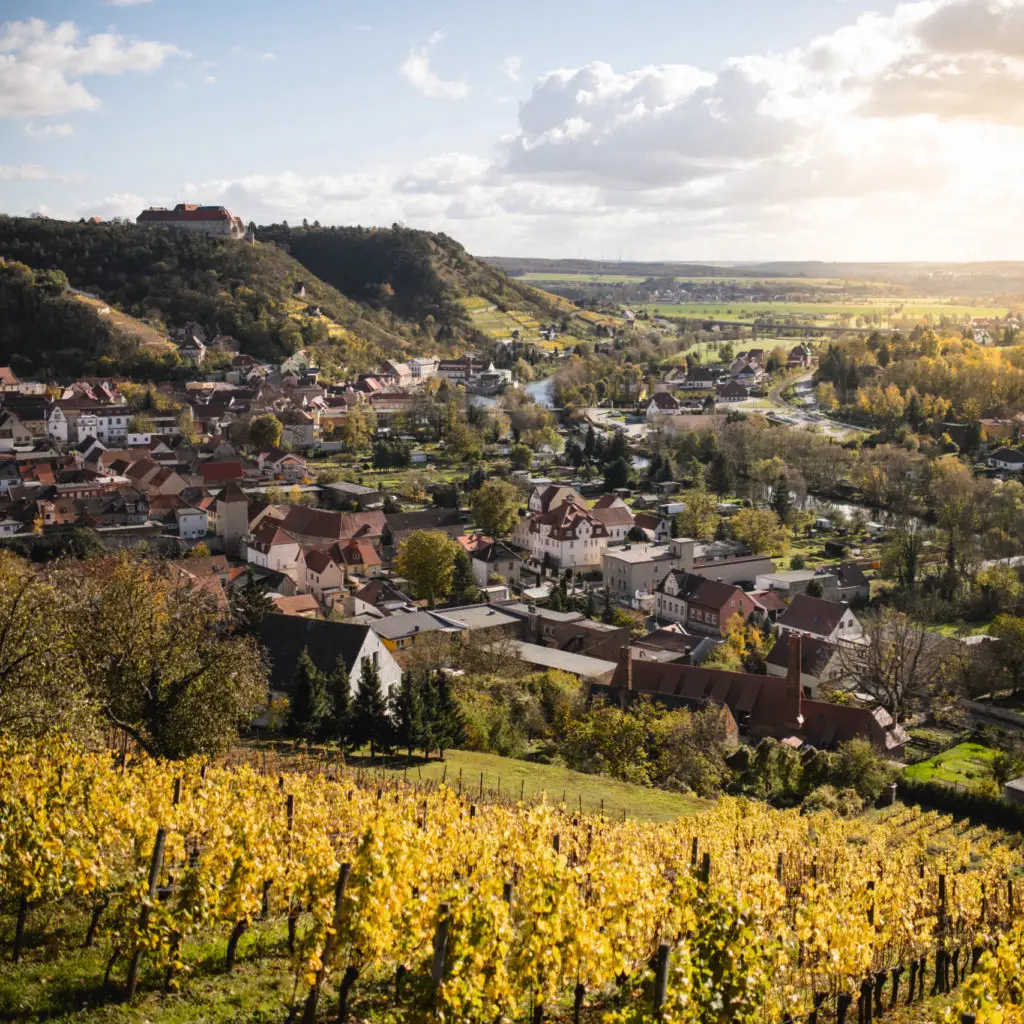
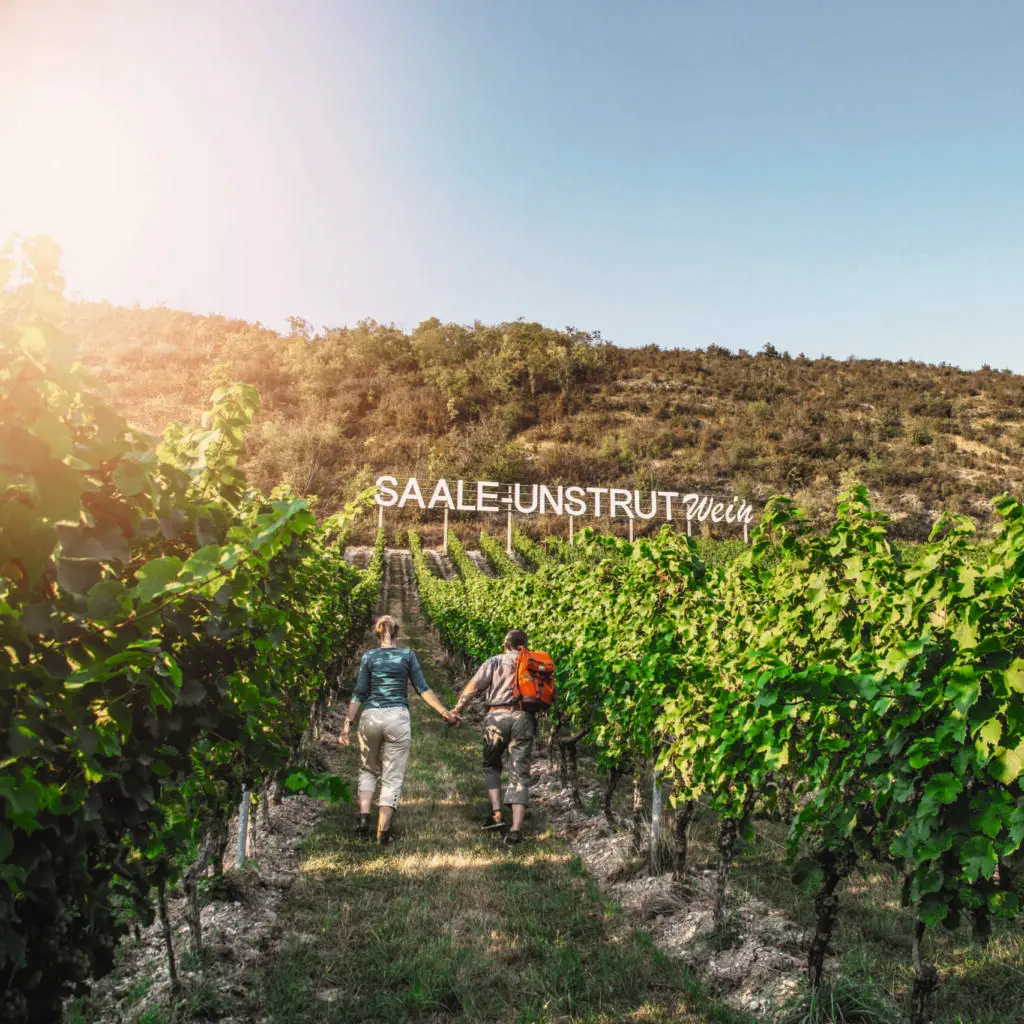
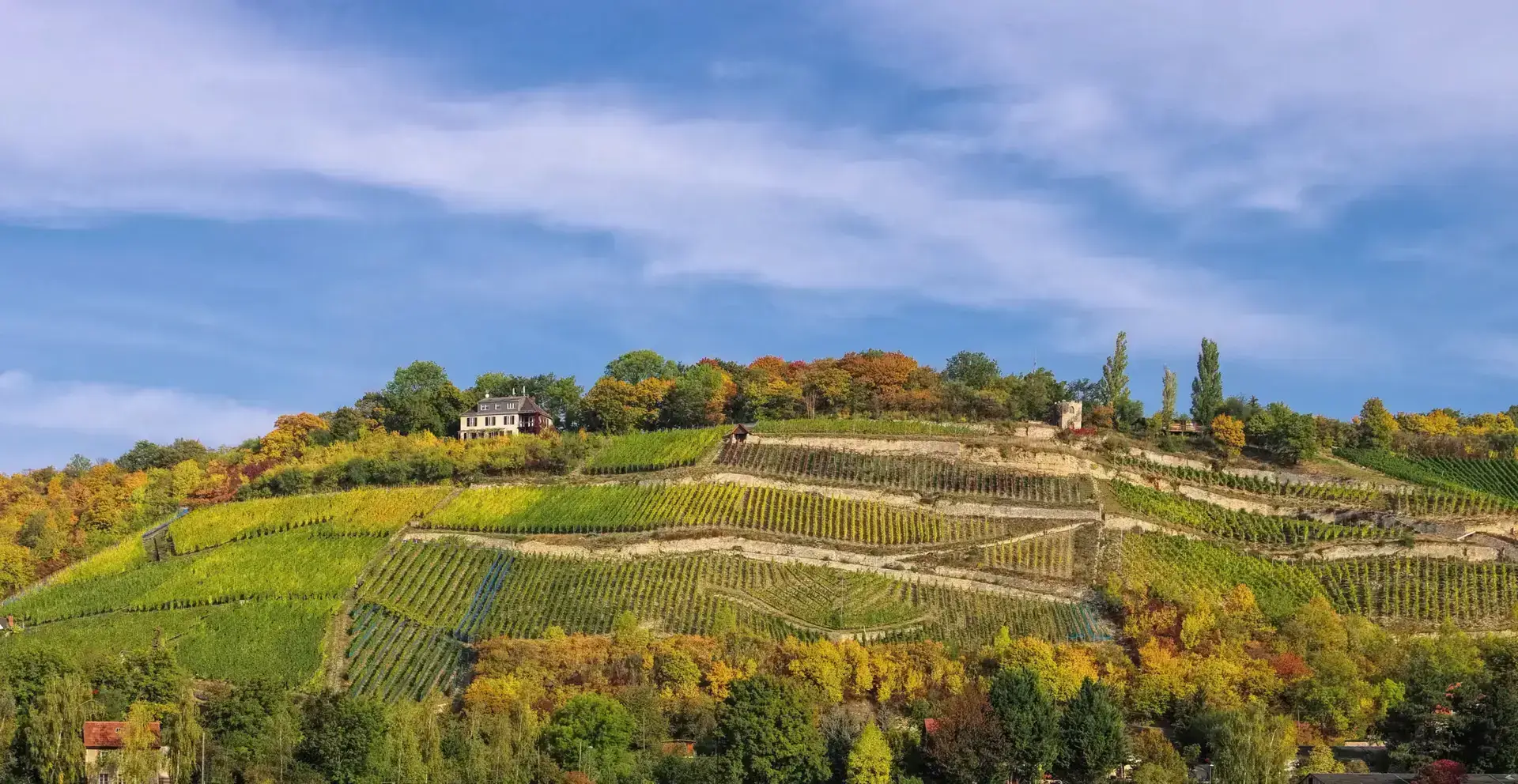
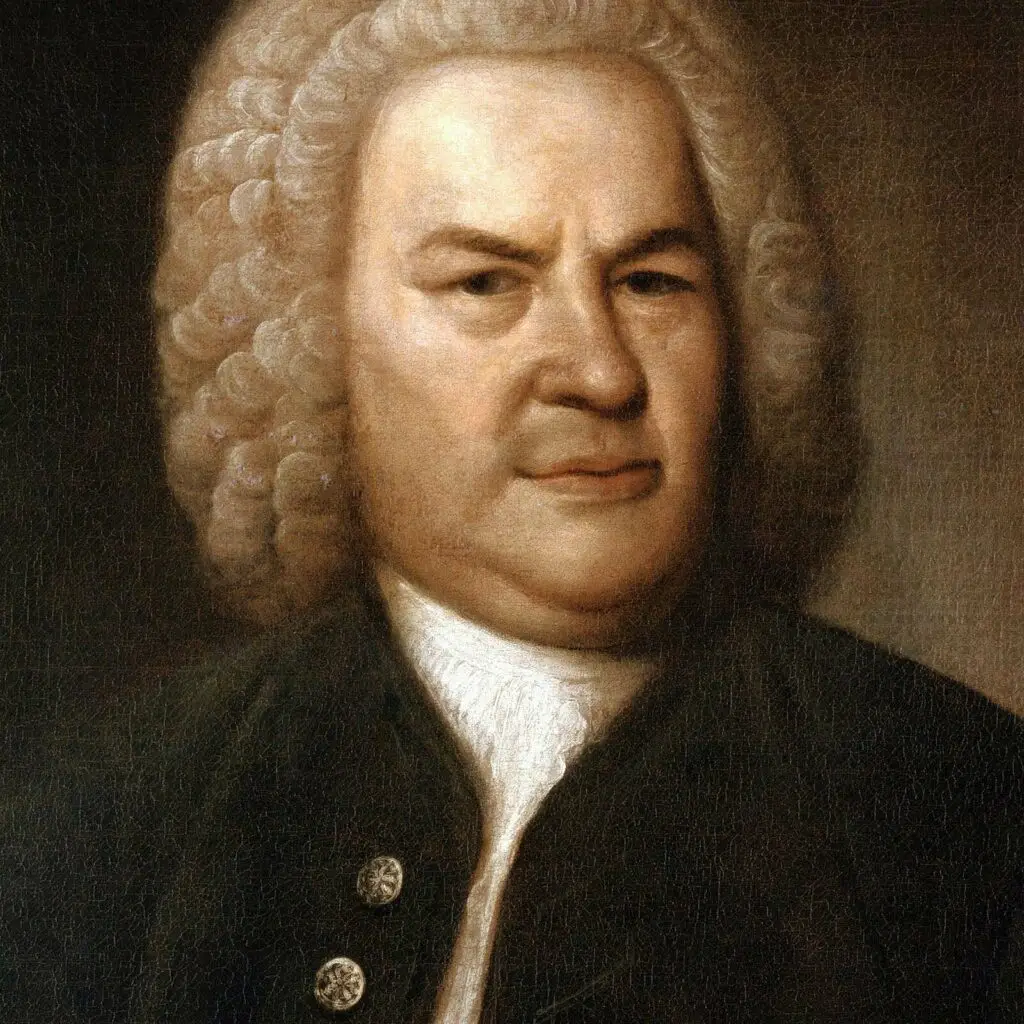
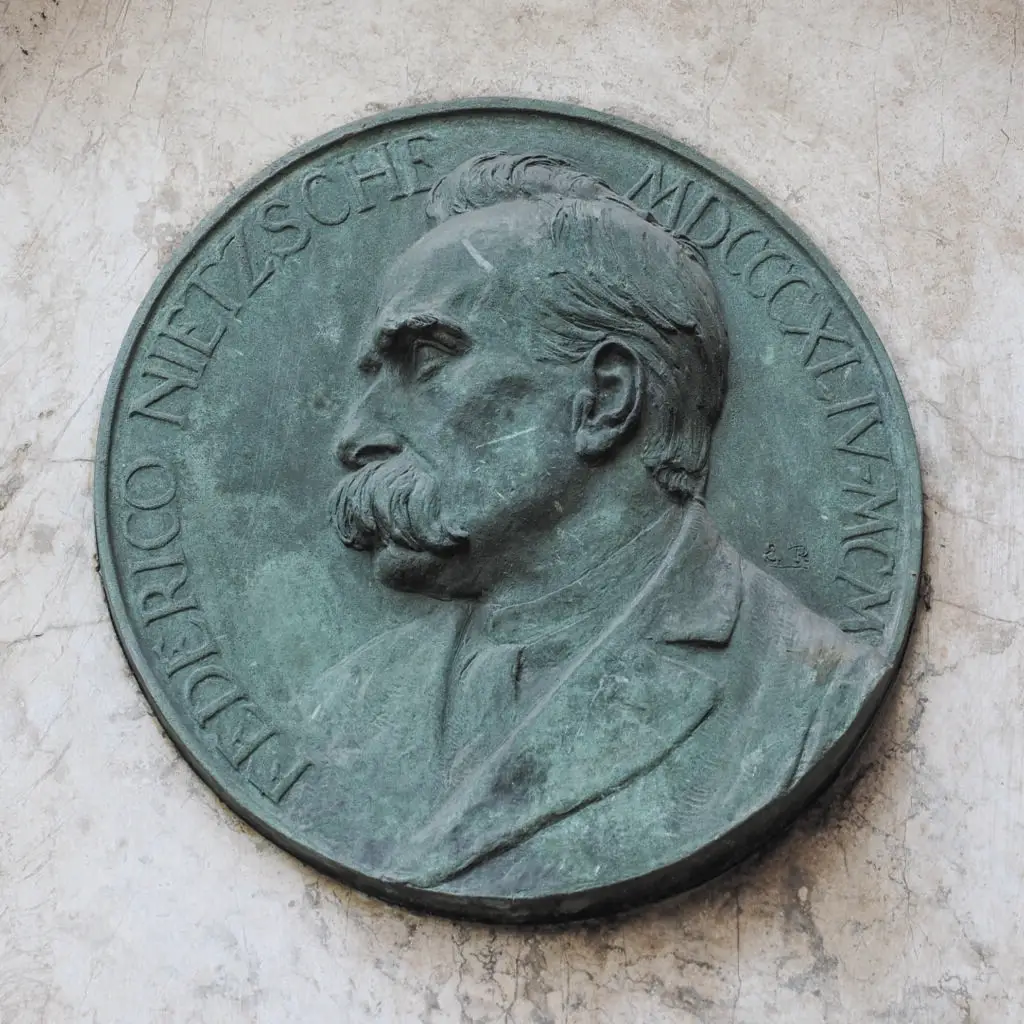
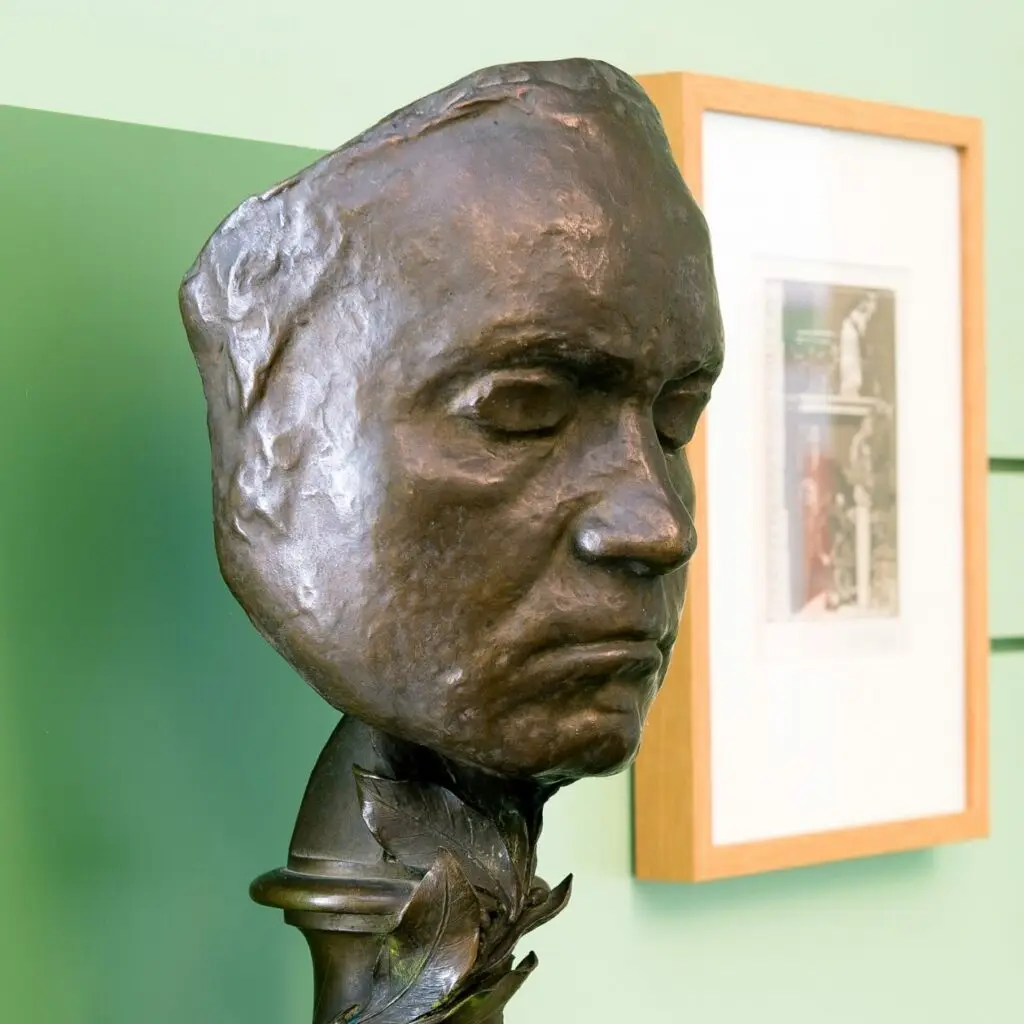

The organ built in 1743 by Zacharias Hildebrandt in the Naumburg town church of St. Wenceslas is considered an exemplary piece of late Baroque organ building. Johann Sebastian Bach and Gottfried Silbermann specially approved the instrument in 1746 – Bach is still recognised today as the creator of its unique sound.
The philosopher Friedrich Nietzsche (1844 – 1900) spends his youth and old age with his mother in Naumburg. Franziska Nietzsche’s house is now a documentation centre. Max Klinger (1857 – 1920), Leipzig painter and graphic artist, lives in his vineyard house in the Naumburg district of Großjena from 1903.

Like pearls on a precious necklace, magnificent cathedrals with their treasures are lined up next to lively monasteries, old castles and palaces next to majestic palaces. Spectacular medieval festivals attract visitors, special hands-on activities for children, and culinary discoveries offer fun and enjoyment for the whole family.
Since 1993, the Middle Ages have been honoured in the heart of Germany, in Saxony-Anhalt: The Romanesque Route was opened with a northern and a southern route. Here, visitors can gain a deep insight into the period between the years 1000 and 1230 and encounter great names such as Thietmar of Merseburg, King Henry I, Emperor Otto the Great, the monk Heimerad and Emperor Otto II with his wife Theophanu. All the places on the two routes breathe history, complemented by extensive events such as exhibitions, court, garden and wine festivals, concerts, markets and much more. You can find more detailed information at www.strassederromanik.de
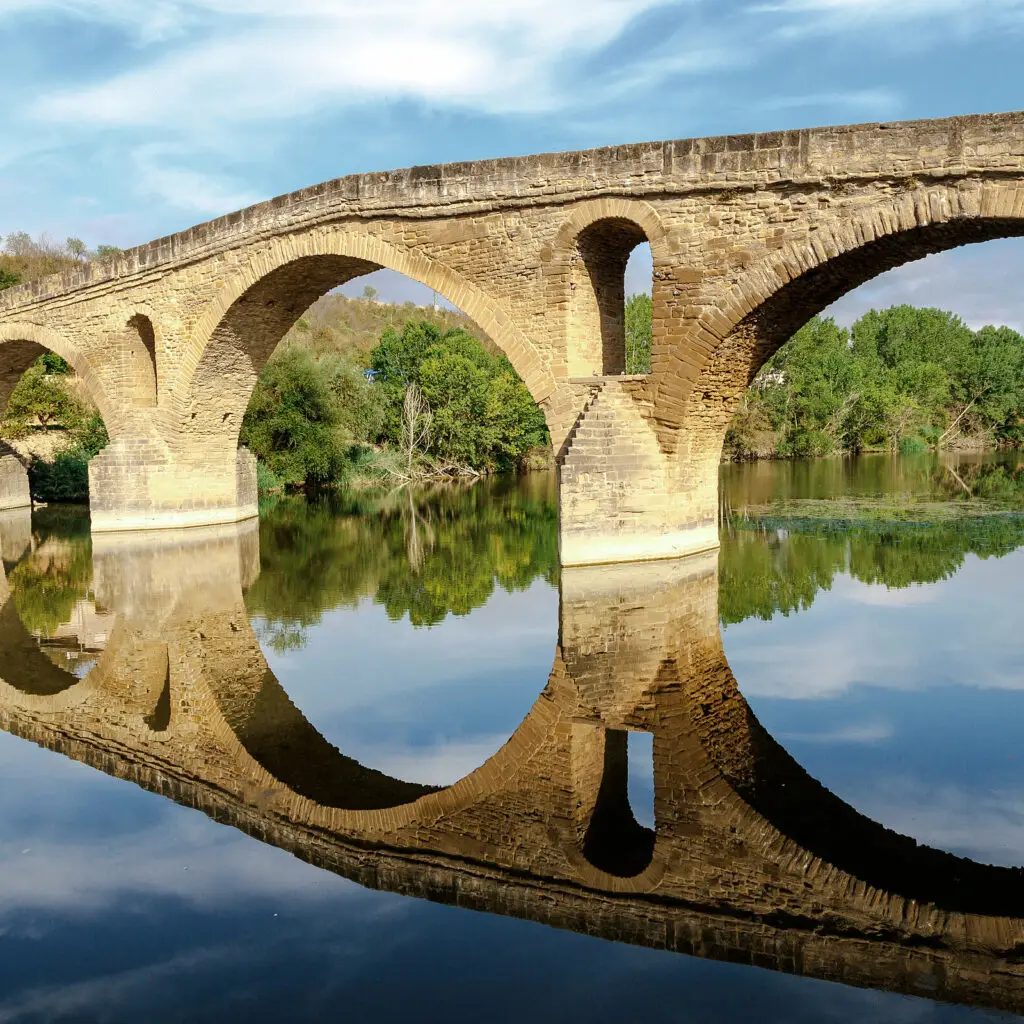
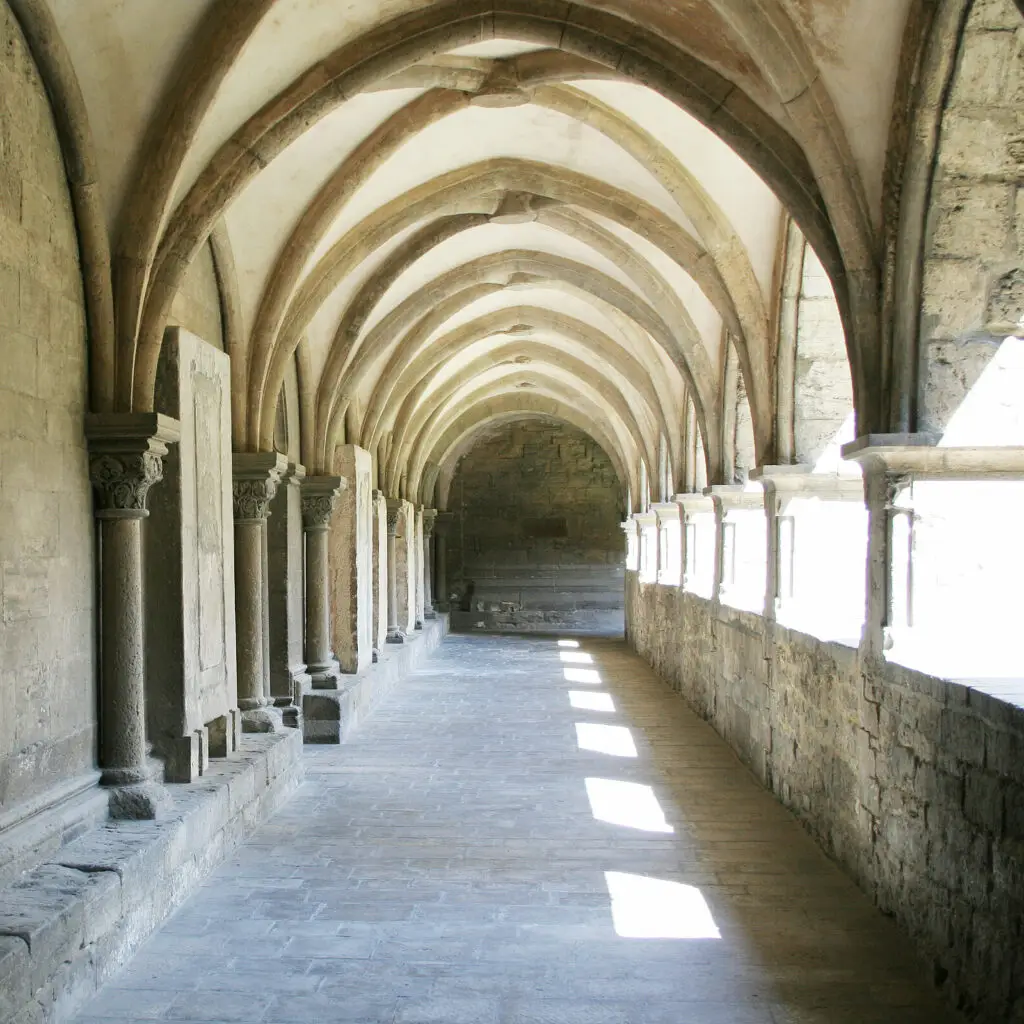
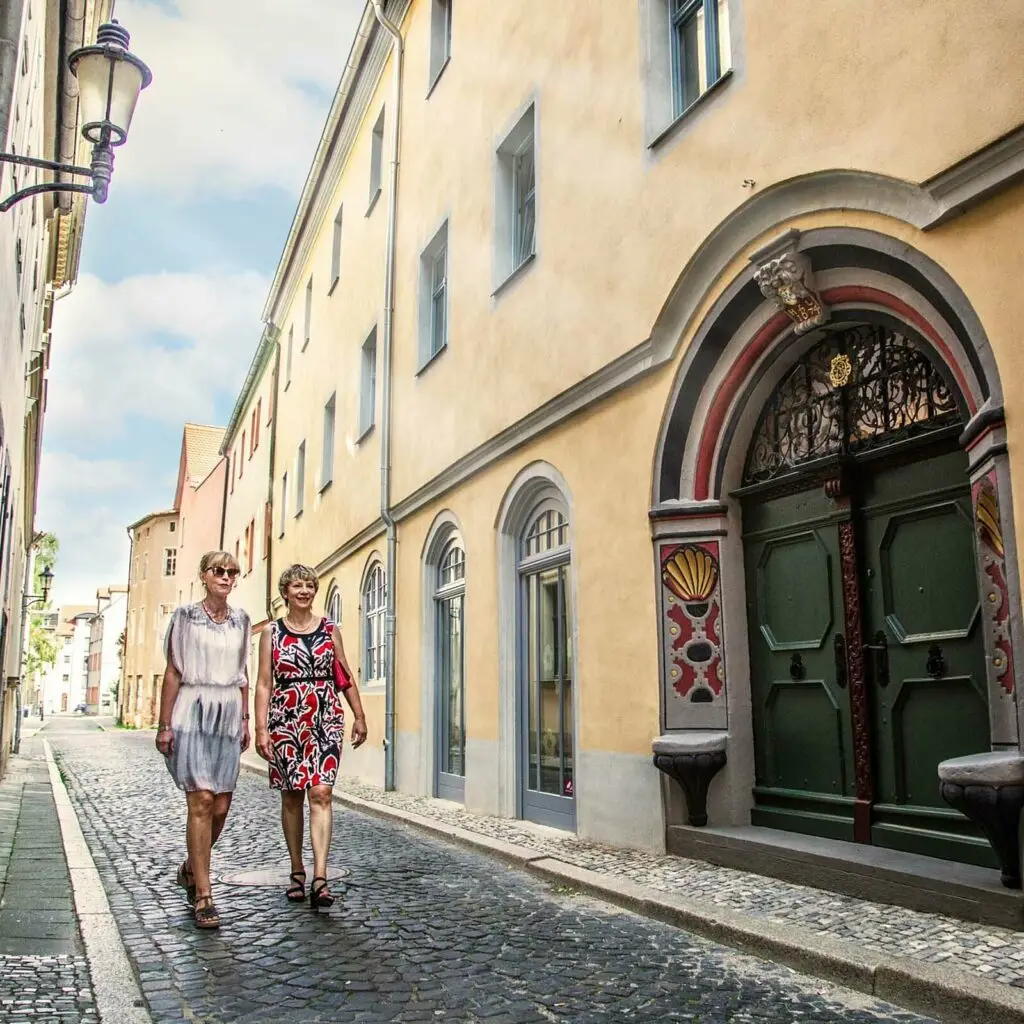
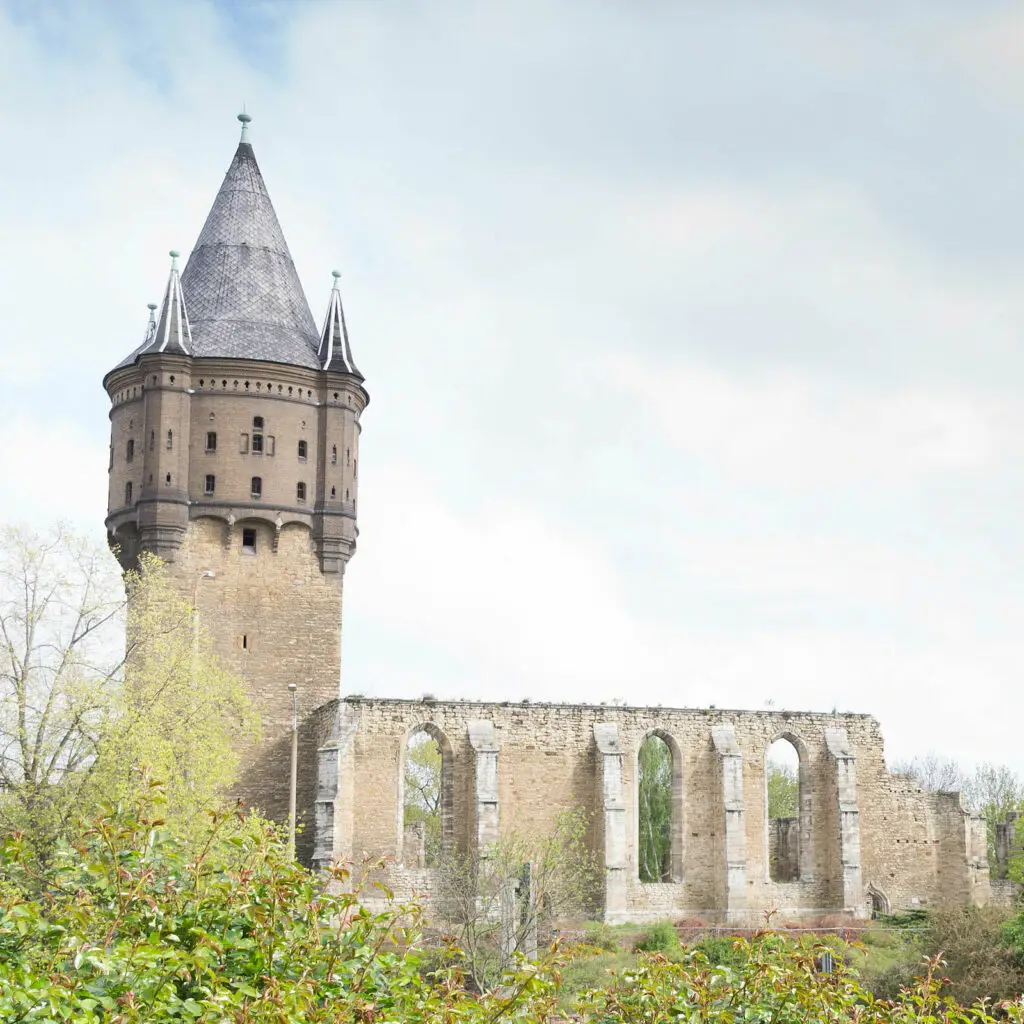

The town is famous for its magic spells, which must have been in the library of Bishop Thietmar von Merseburg as early as 1015 – these are the oldest Old High German writings with pagan content. There is always something going on at Merseburg Castle, a building from the Renaissance period.
The spa and wine town has been known as “Solbad” since 1859, and salt has been mined here since the 17th century. The historic salt works are technical monuments, and the salt contained in the humidity still has a healing effect. Doll pioneer Käthe Kruse worked in Bad Kösen from 1912 to 1950, and the Kösen toy factory continues her legacy to this day. Particularly worth seeing: the view of the Saale valley from the Rudelsburg and Saaleck castles.
The Landesschule Pforta has been a boarding school since 1543. Around 300 pupils live and learn in the Cistercian monastery built in 1137, which was visited by Nietzsche, Ranke and Fichte. The adjoining state winery has been producing impressive wines for over 850 years.

The 100,000-hectare Saale-Unstrut-Triasland Nature Park is a marvellous area for hikers and cyclists. Explore 18 rare species and other protected plants on the orchid trail? Experience the river valleys of the Saale, Unstrut, Elster and Ilm? Get a taste of history on the wine or mill hiking trail and savour delicious regional delicacies? Whatever you fancy. You are welcome to hire our bikes and take a seasonal picnic basket with you.
Paddling reveals the true beauty of Naumburg and the surrounding area: imposing limestone slopes, proud castles and palaces, historic bridges and enchanted banks. Anglers will also find curious bodies of waters here.
Gliding, paragliding or hot air ballooning offer impressive perspectives – you can take to the skies at Laucha-Dorndorf airfield, for example.
Round off an active day at the Zufriedenheit restaurant and wine bar.
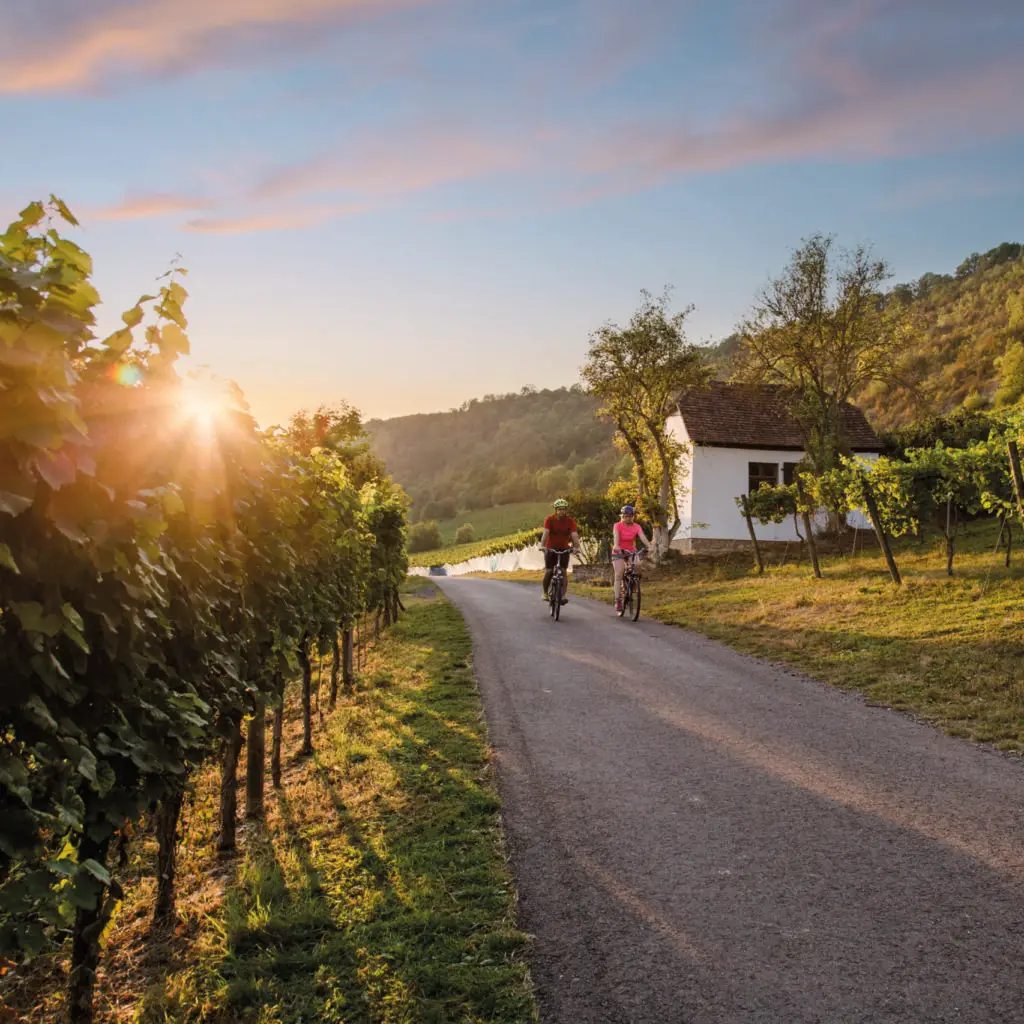
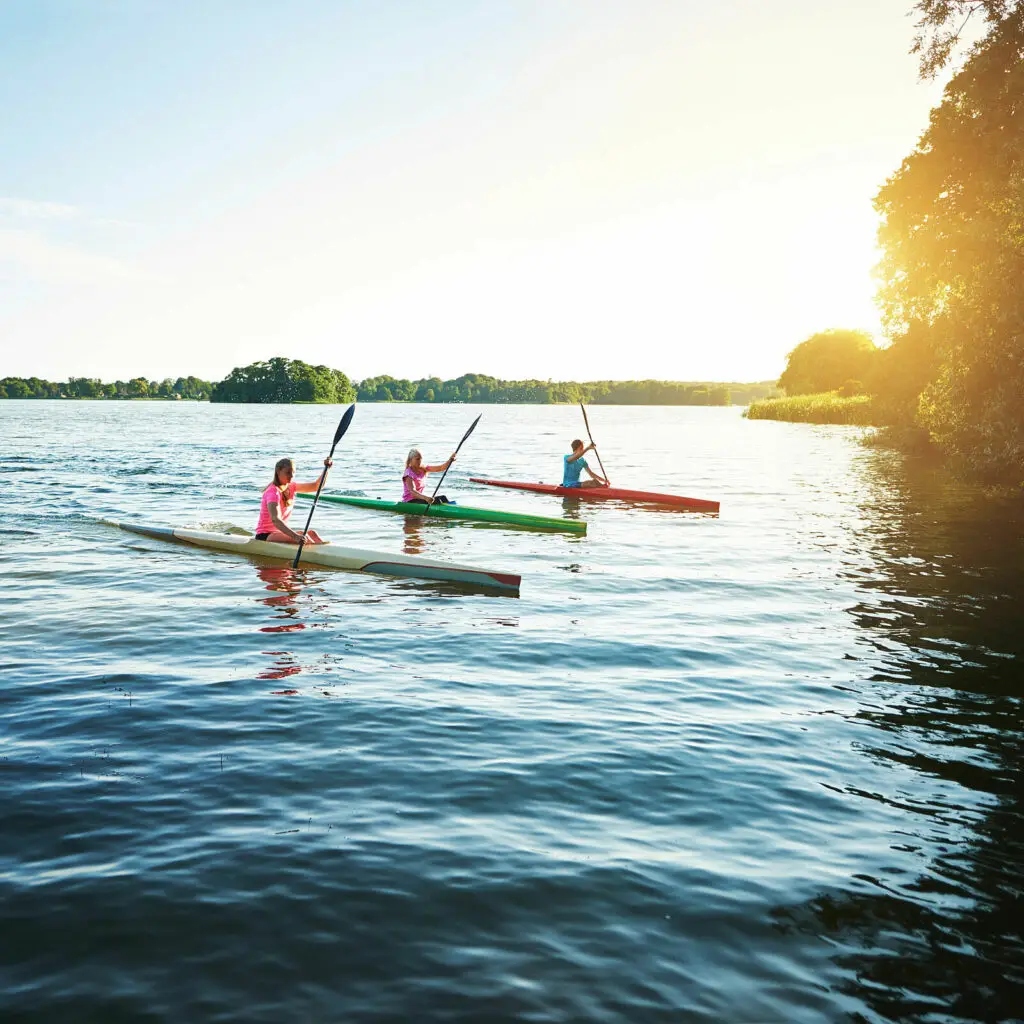

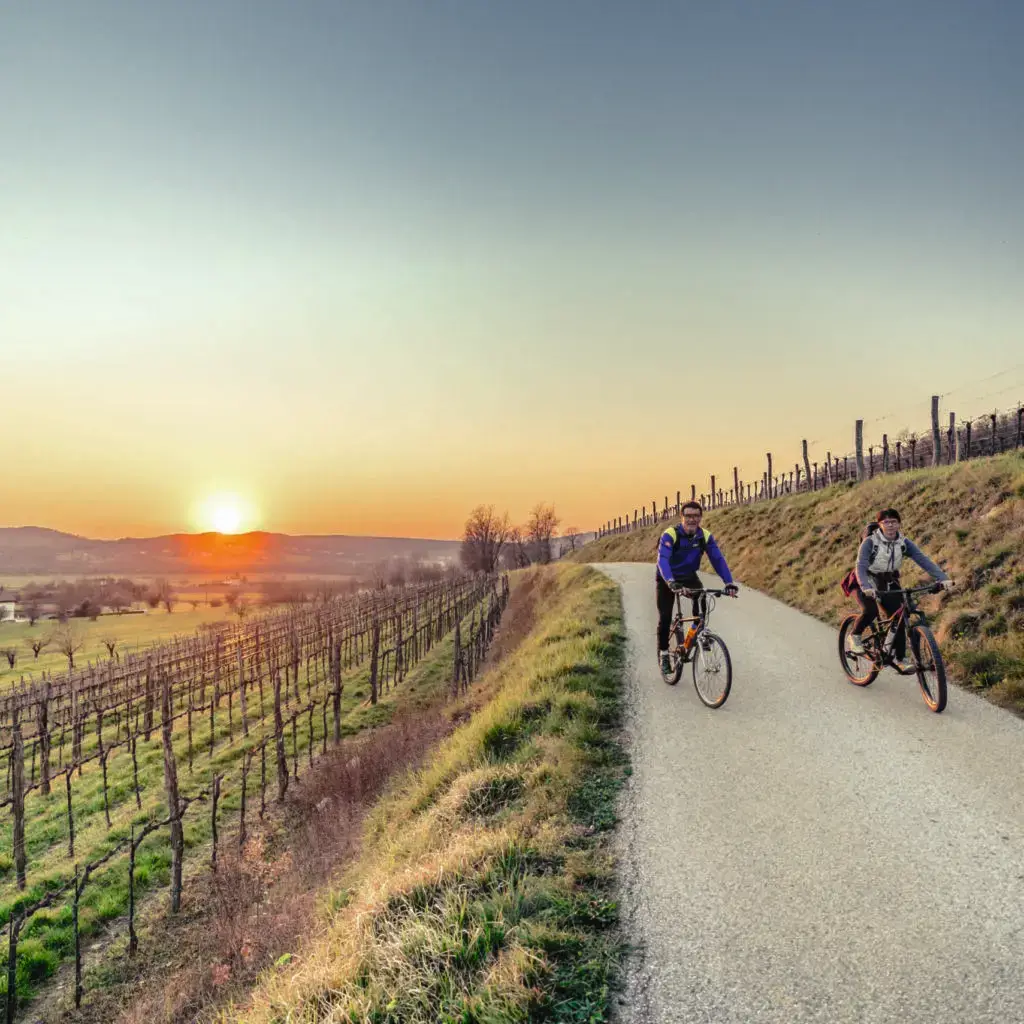

Enjoyment takes centre stage with us. And with our new bicycles, which you can now hire directly from Gasthof Zufriedenheit, you have the opportunity to enjoy your free time, the countryside and regional products outside our premises too.
Explore the “Tuscany of the North” – for example on the wine route of the Unstrut cycle path or on a tour from Naumburg to Roßleben with attractions such as Neuenburg Castle or the monastery and imperial palace of Memleben. A cycle tour in the Naumburg region combines activity, nature and culture.
Please reserve in advance by email: